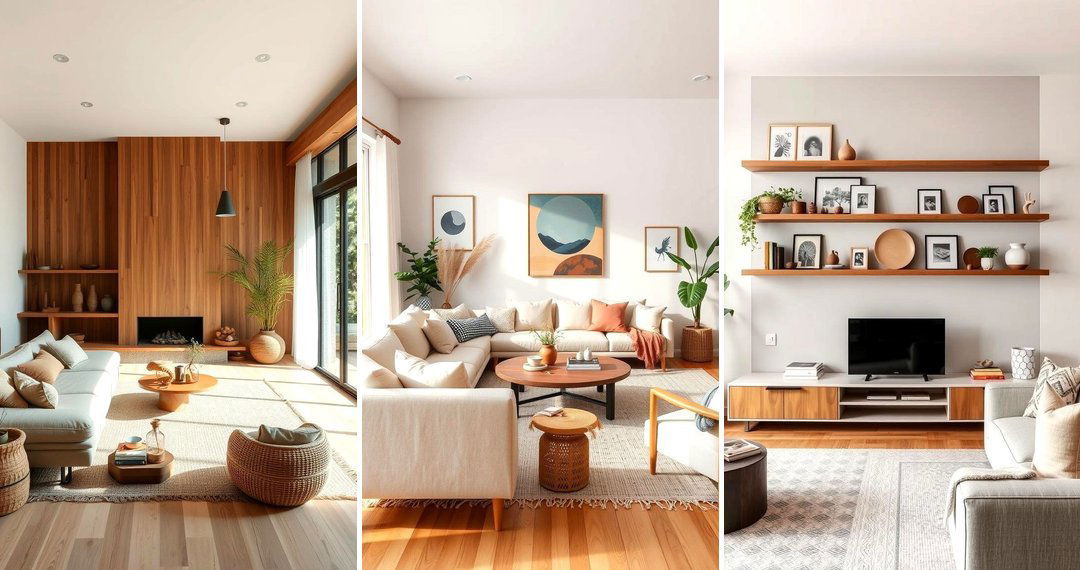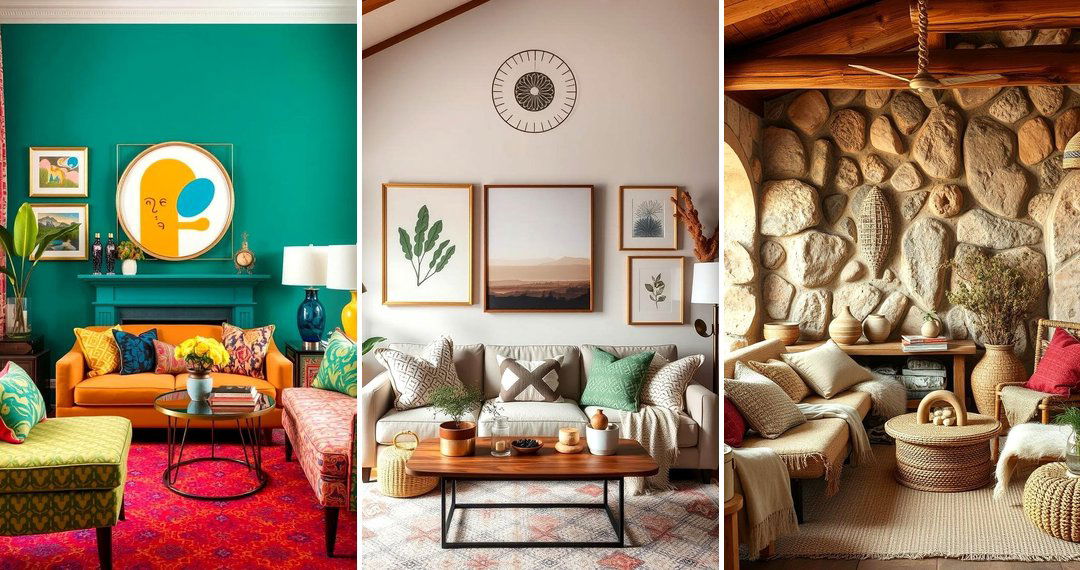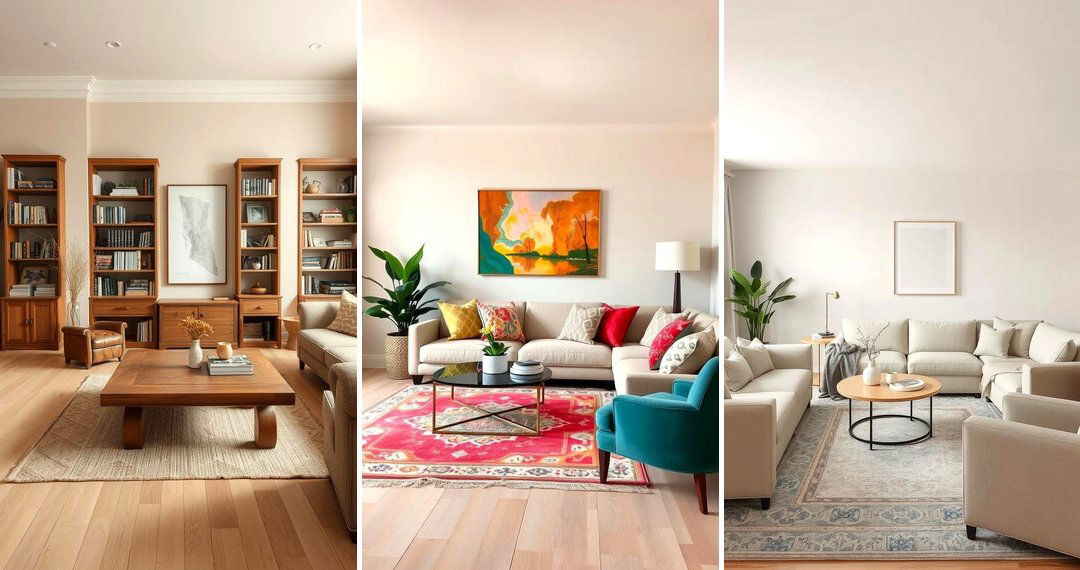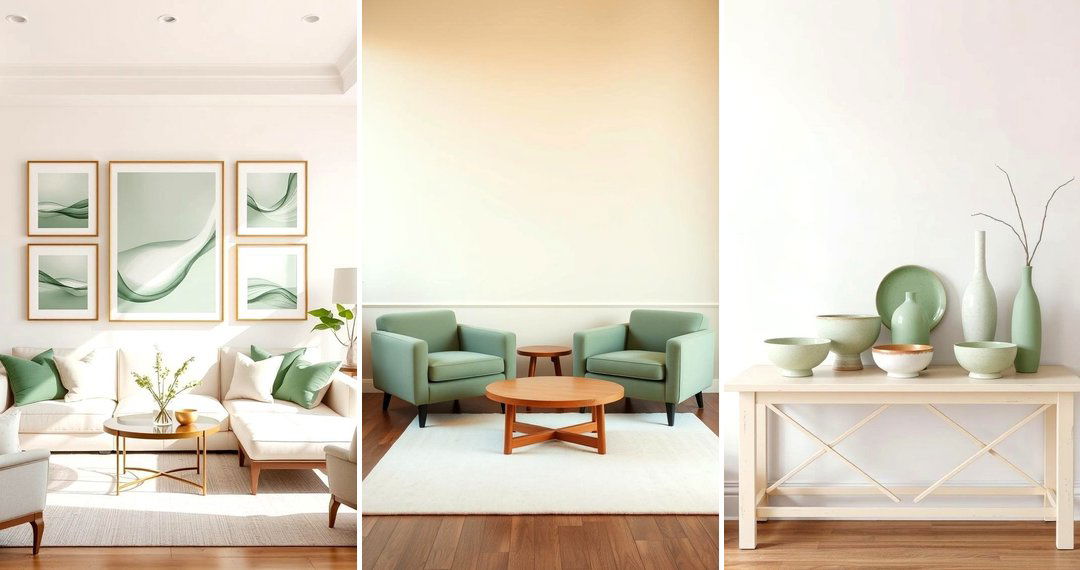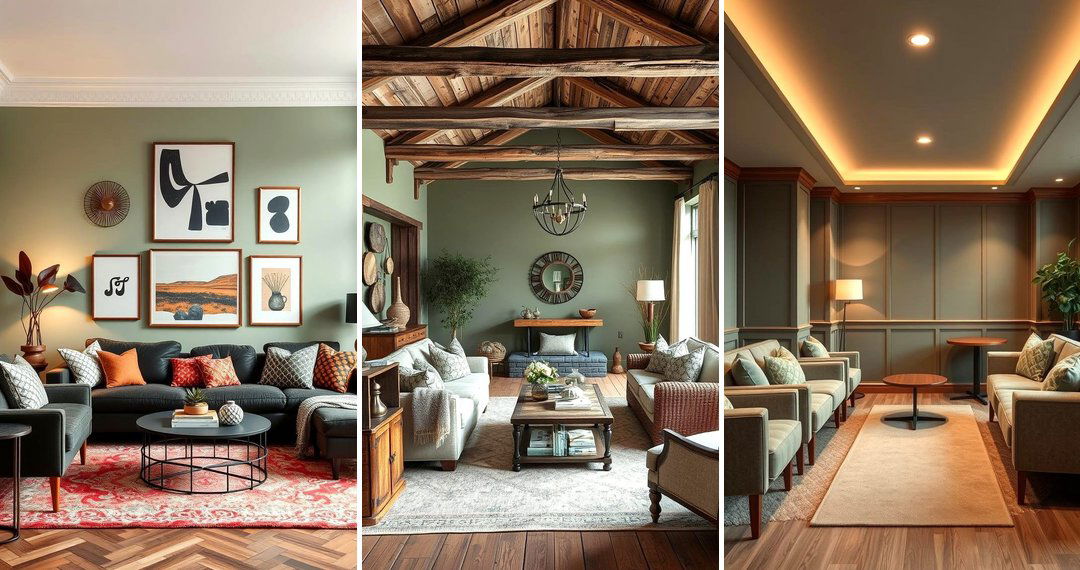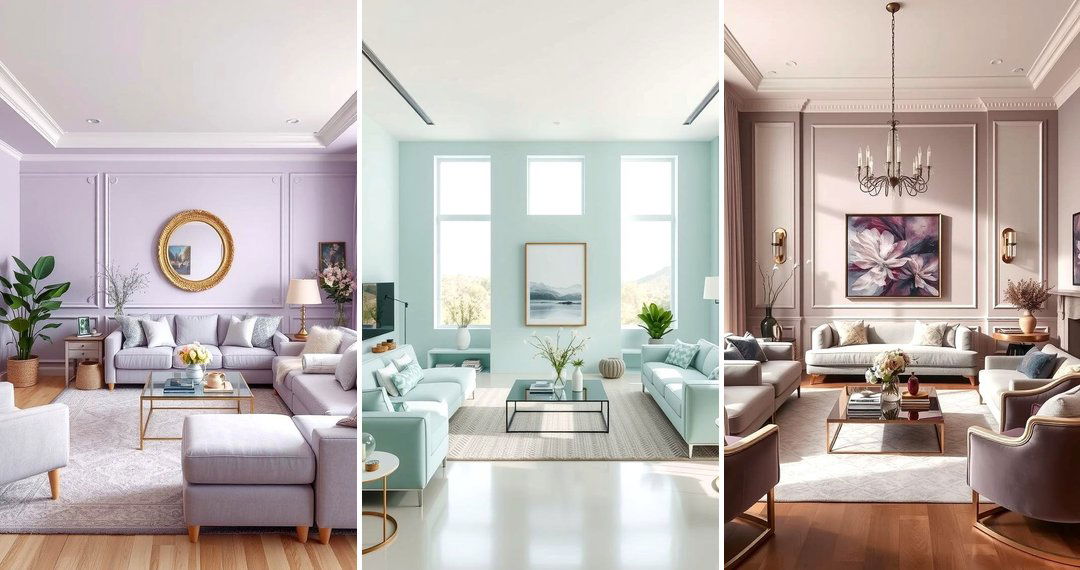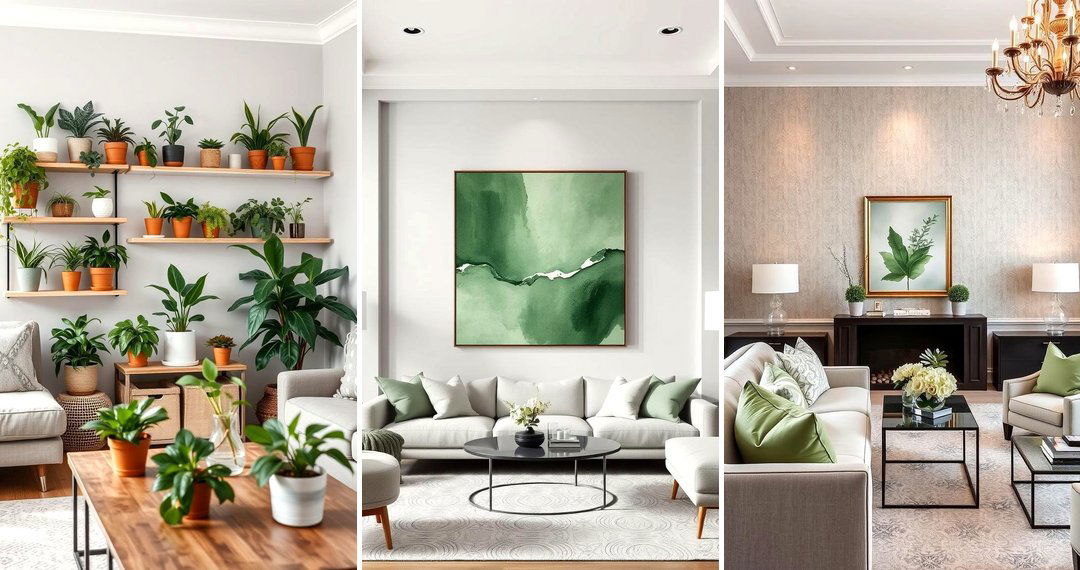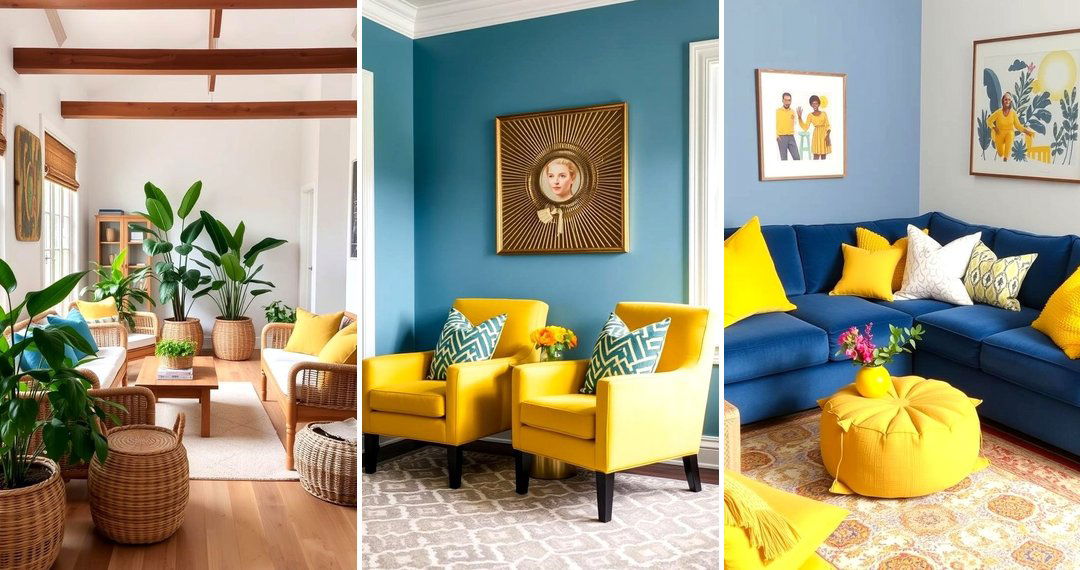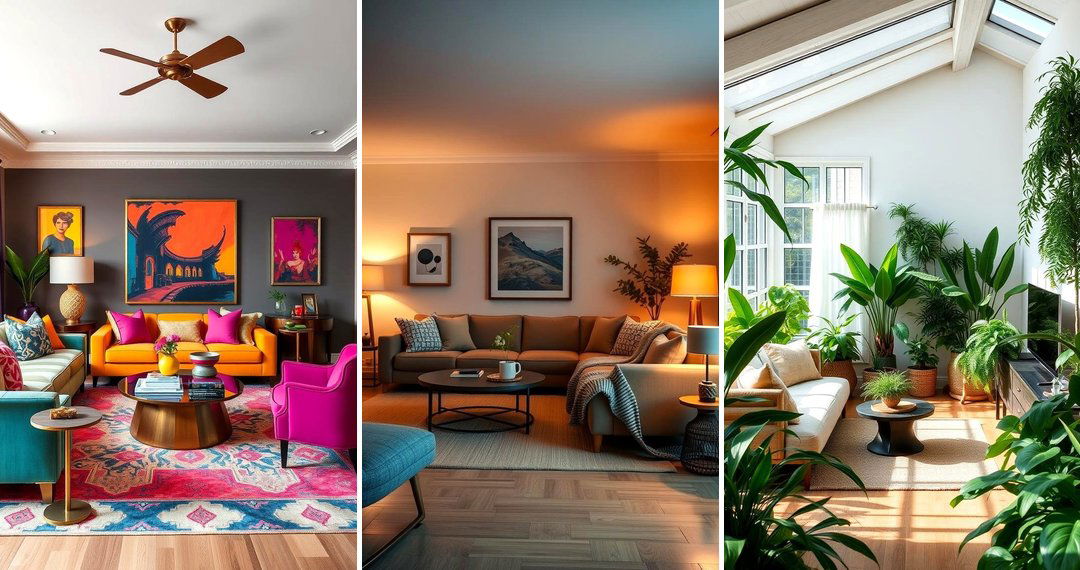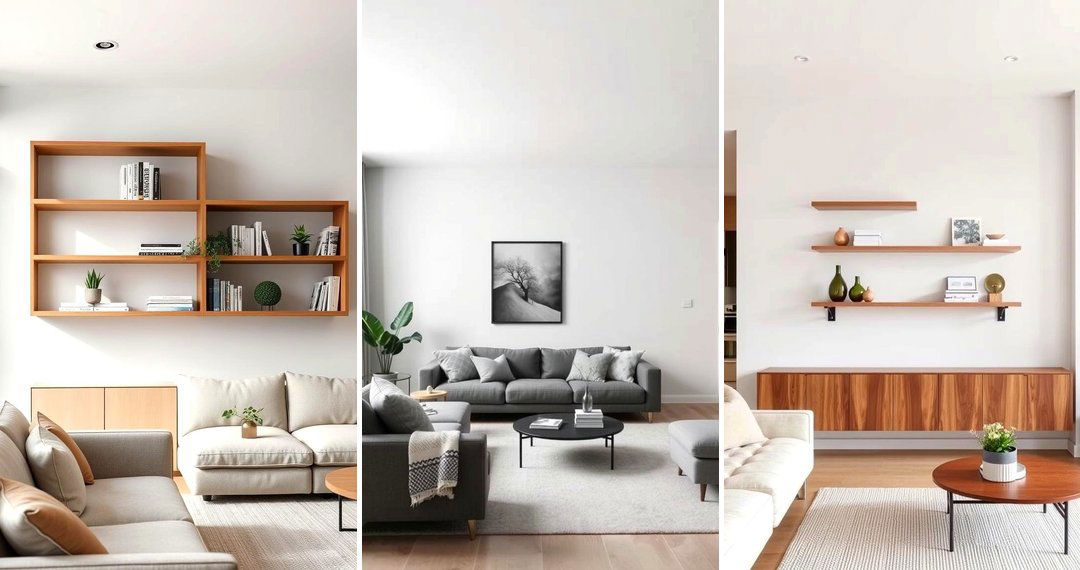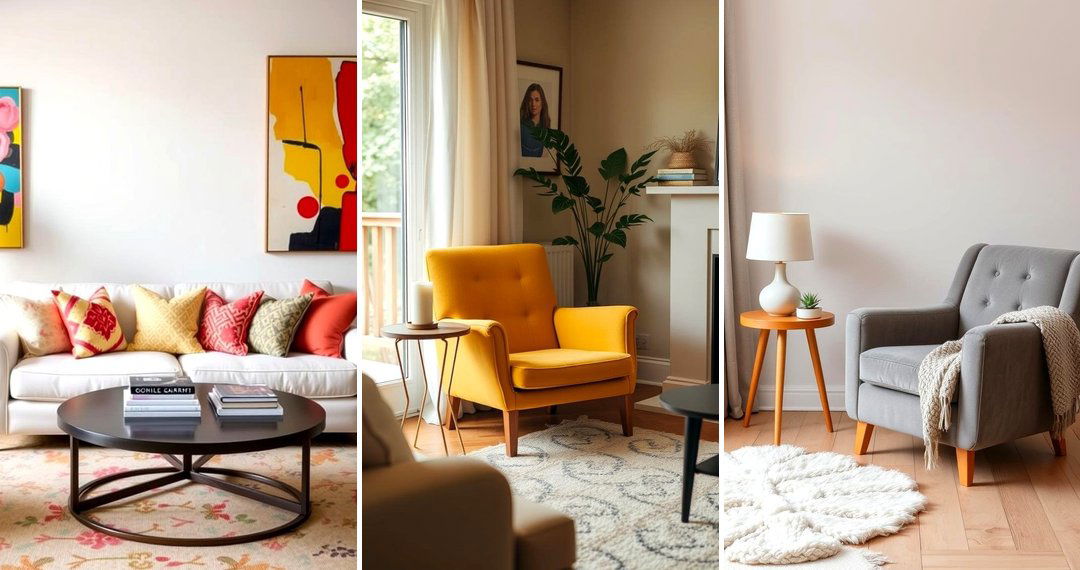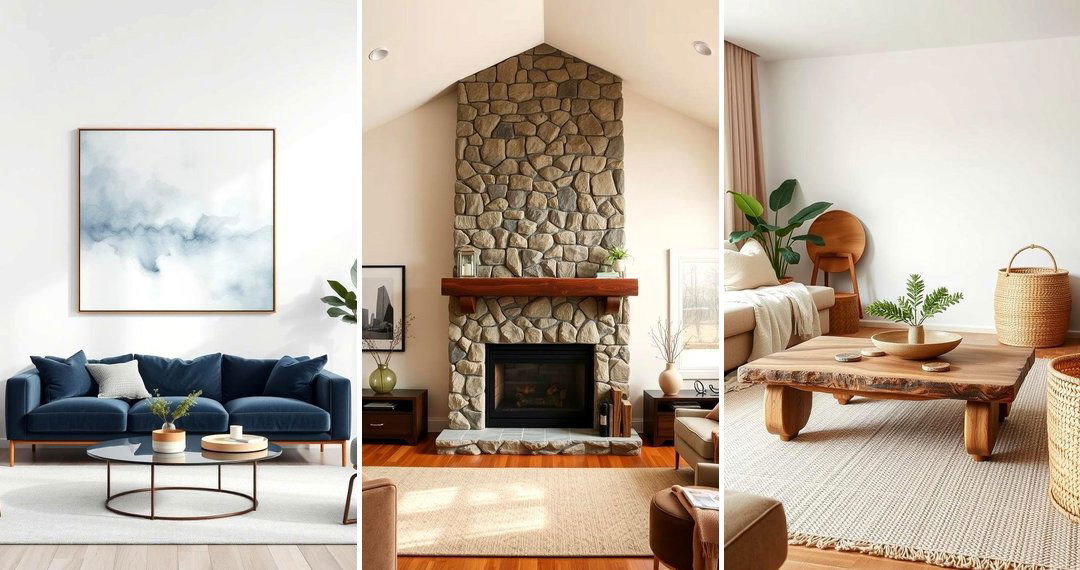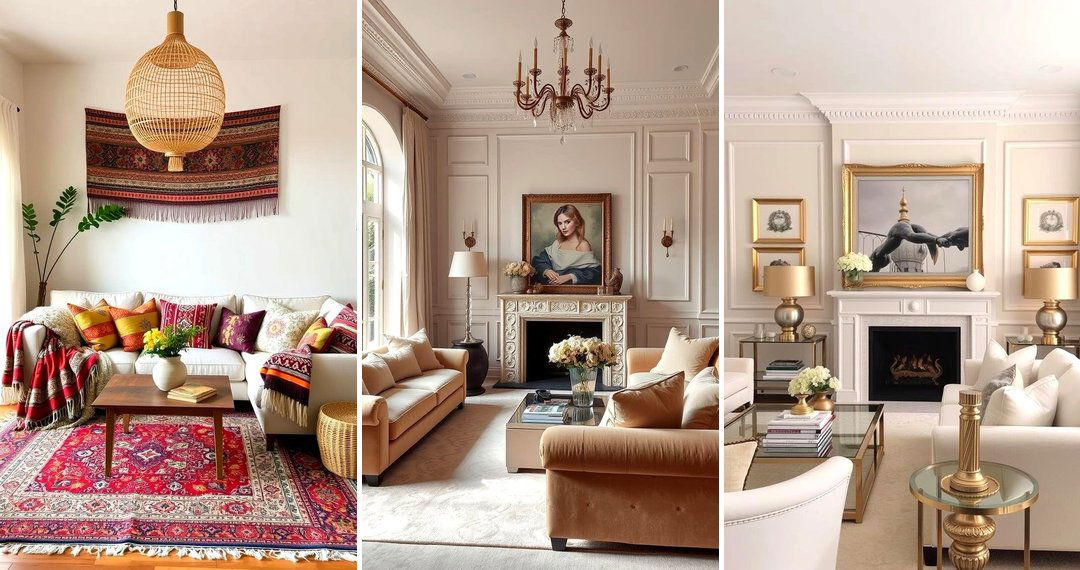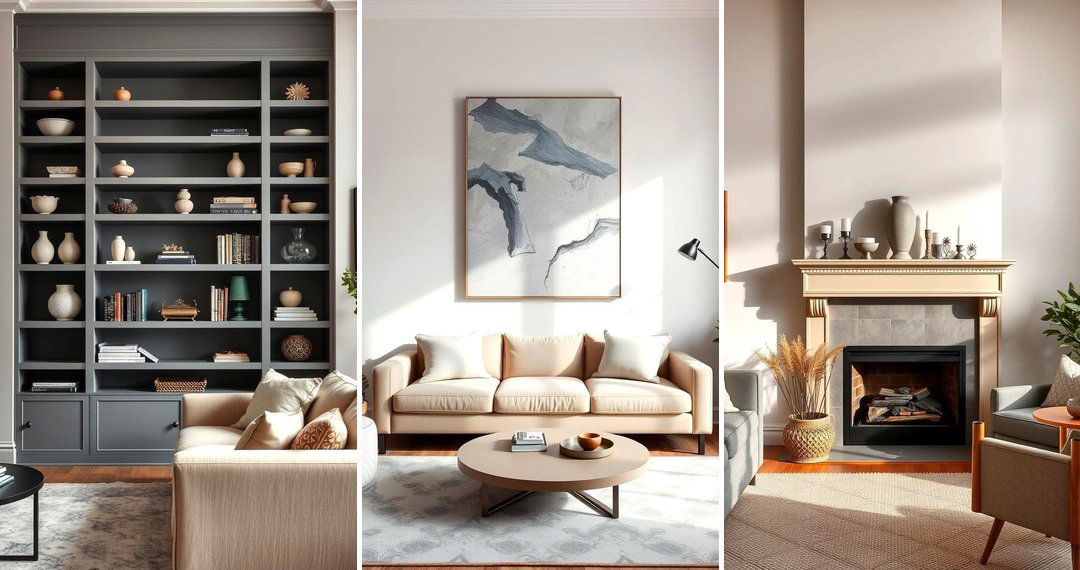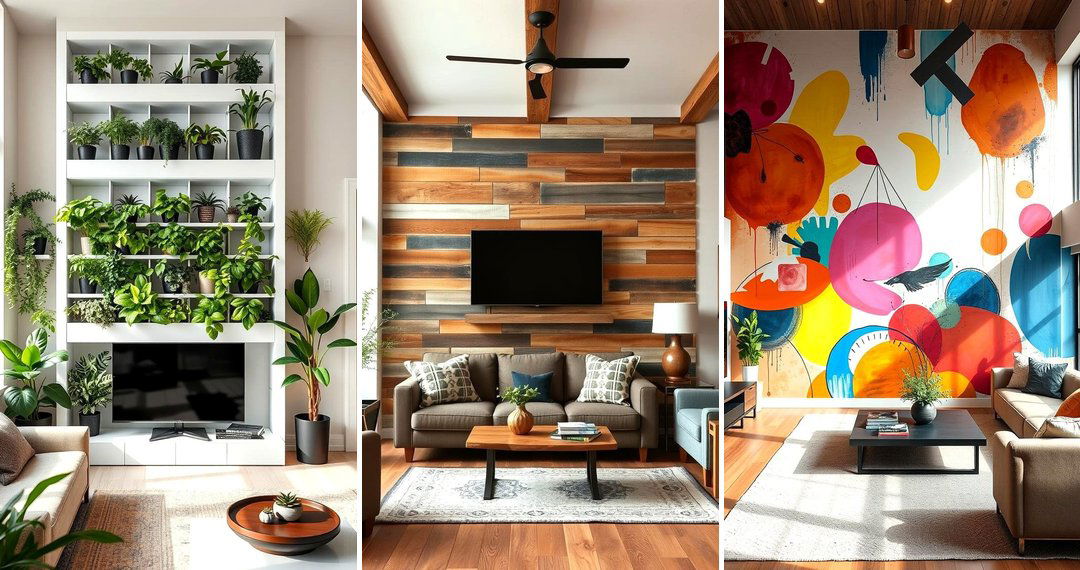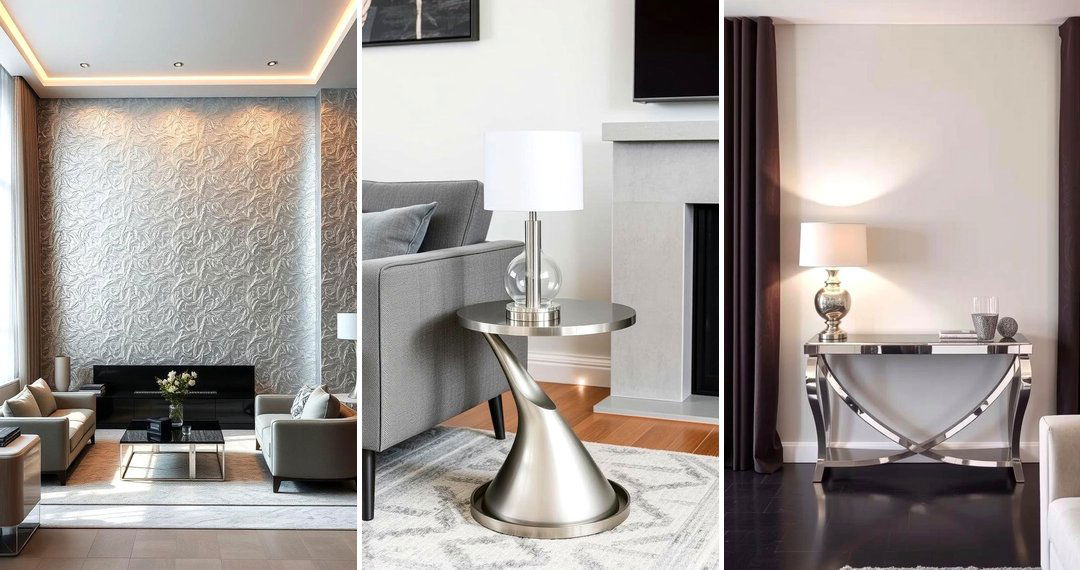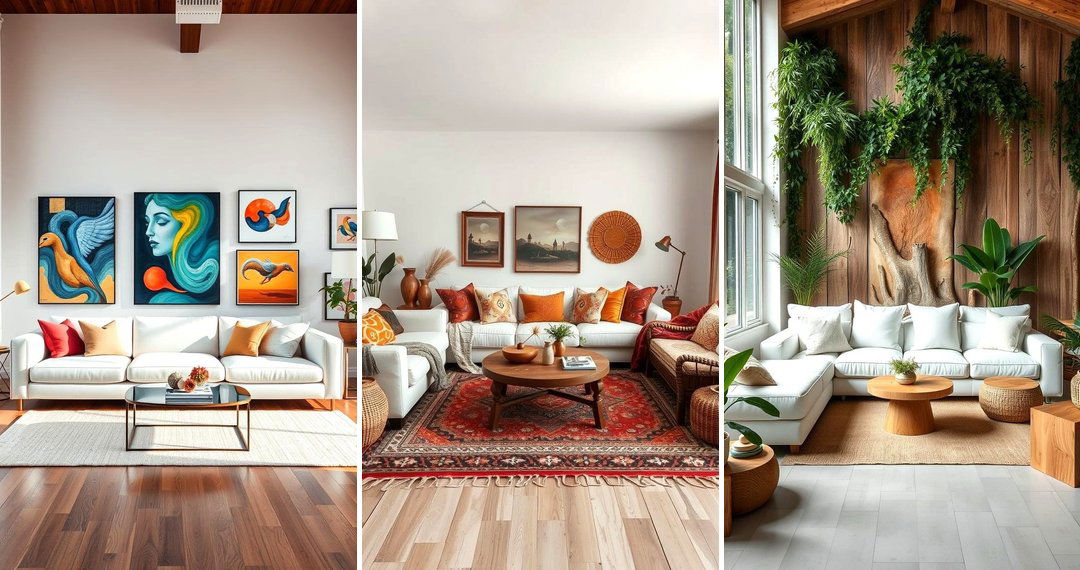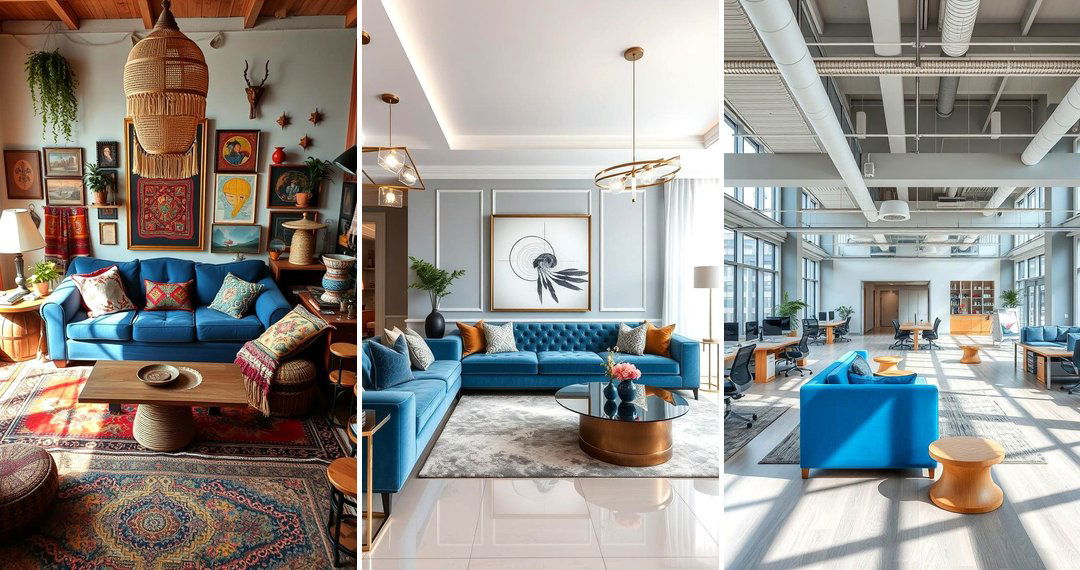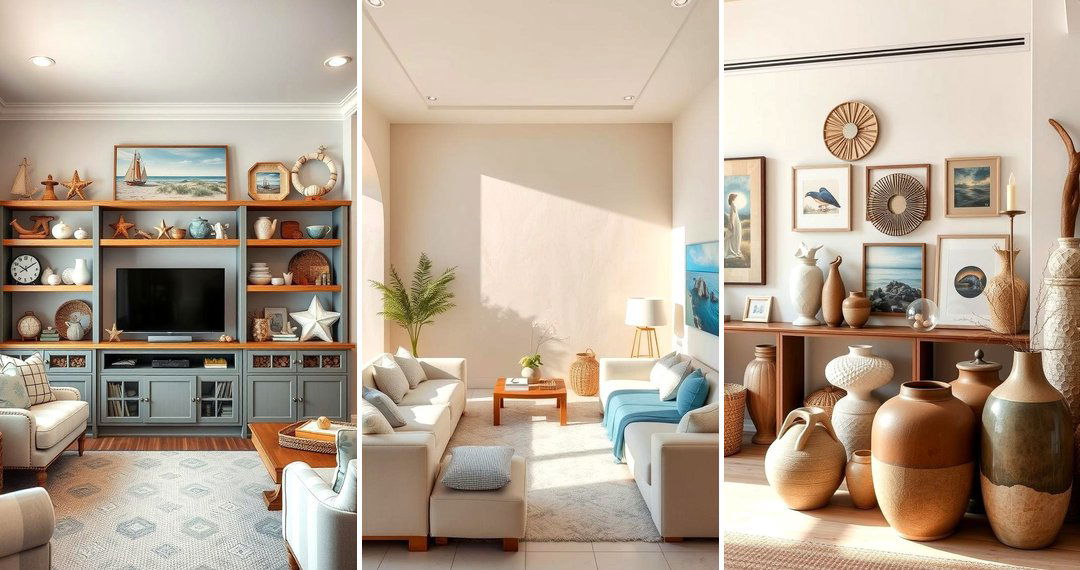Japandi living rooms represent a harmonious blend of two distinct yet complementary design philosophies: the serene minimalism of Japanese aesthetics and the functional warmth of Scandinavian hygge. This fusion creates spaces that are not only visually appealing but also deeply comfortable and conducive to well-being. By embracing natural materials, a muted color palette, and a focus on simplicity, Japandi design fosters an atmosphere of tranquility and understated elegance. Discover how to cultivate this serene and stylish ambiance in your own home by exploring the following ideas that perfectly capture the essence of Japandi living.
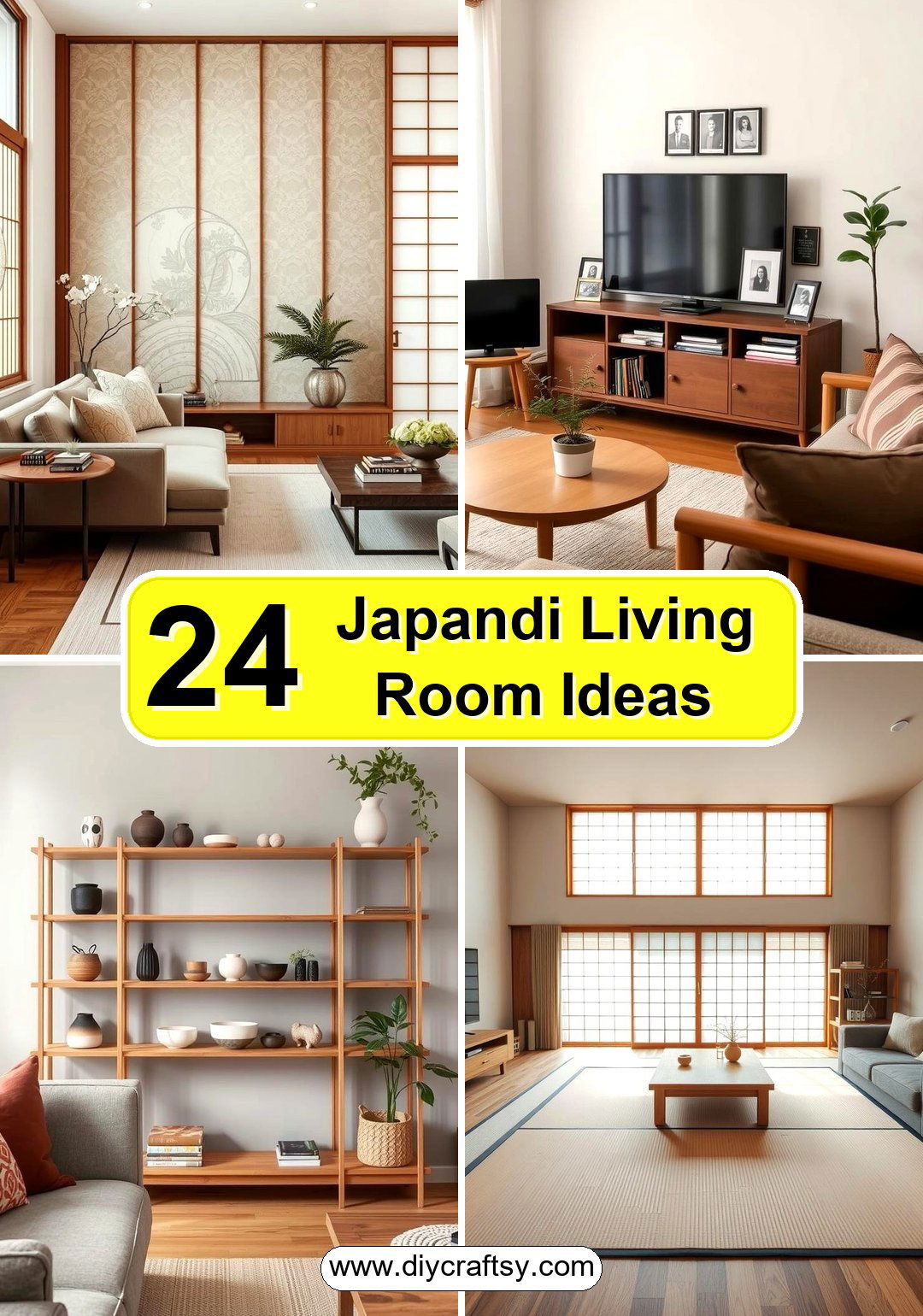
1. Embrace a Neutral Foundation
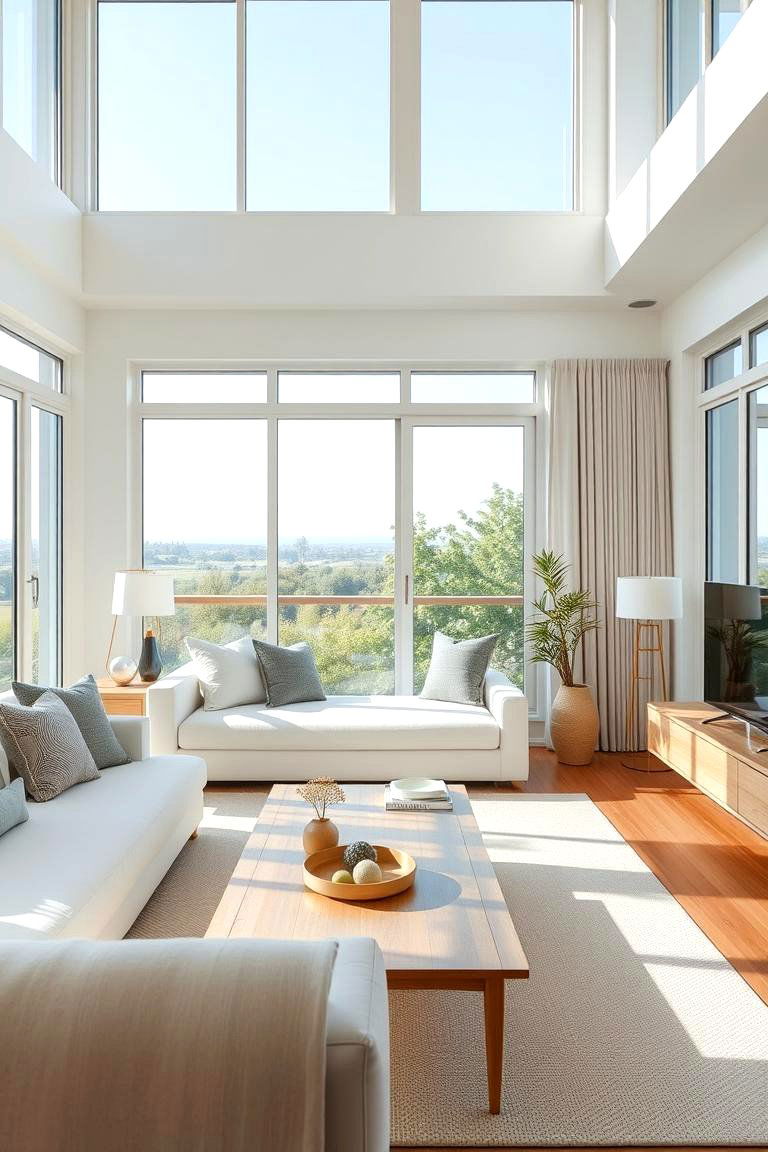
A cornerstone of Japandi design is a soothing neutral color palette. Think soft whites, warm greys, and earthy beiges. This creates a calm and versatile backdrop that allows natural materials and carefully chosen decor to truly shine. The benefit lies in its ability to promote relaxation and a sense of spaciousness, even in smaller living areas. This understated elegance ensures that the focus remains on the quality of the furnishings and the overall feeling of serenity.
2. Introduce Natural Wood Tones
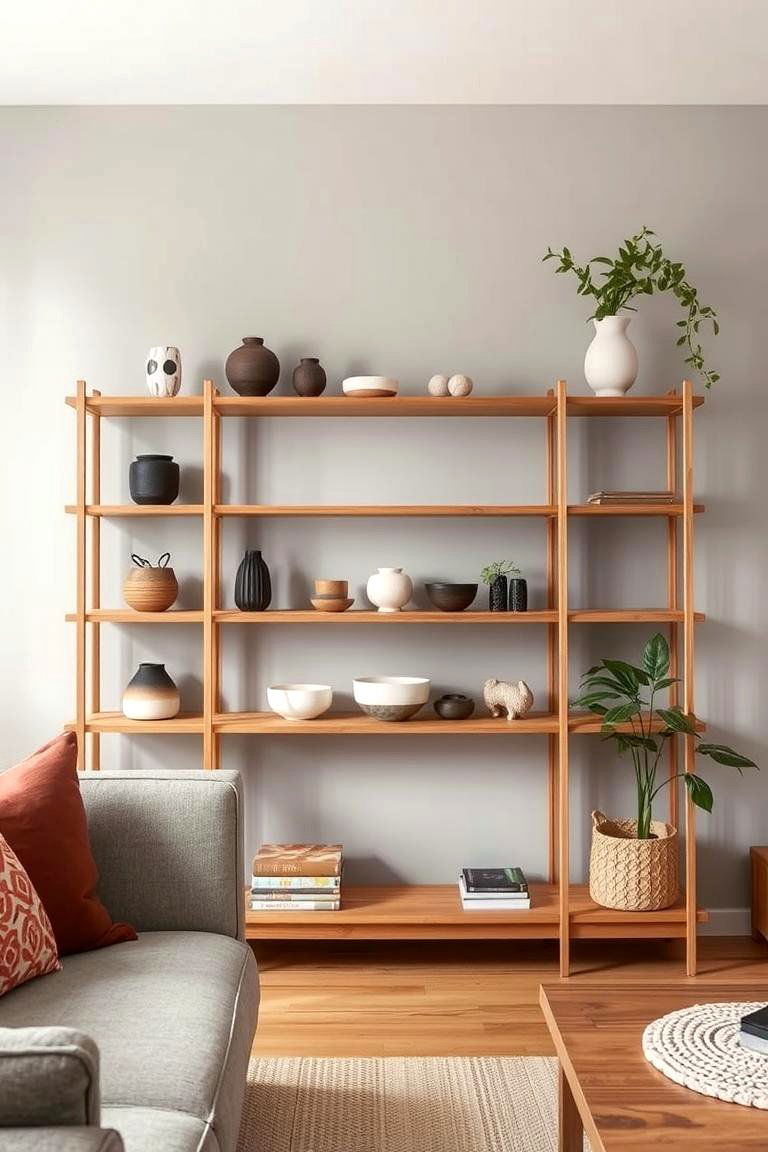
Natural wood plays a vital role in bringing warmth and organic texture to a Japandi living room. Opt for furniture with light to medium wood tones like oak or ash, or incorporate darker accents such as walnut for contrast. The key benefit here is the inherent connection to nature, which fosters a sense of grounding and tranquility within the space. The tactile quality of wood also adds a layer of sensory richness to the minimalist aesthetic.
3. Prioritize Minimalist Decor
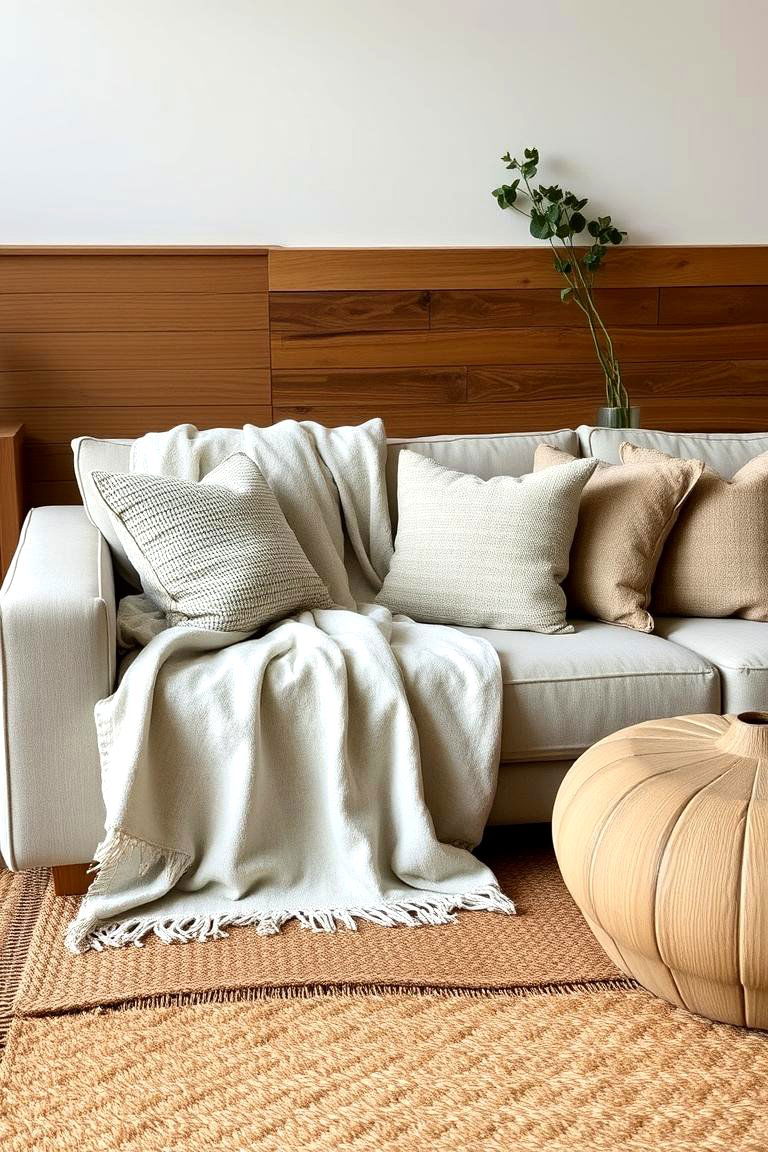
In a Japandi living room, less is truly more. Embrace a curated approach to decor, selecting only items that are both beautiful and functional. This mindful approach reduces visual clutter and promotes a sense of calm. The practical benefit is a living space that feels more open, airy, and easier to maintain, allowing you to focus on relaxation rather than constant tidying.
4. Integrate Lush Indoor Plants
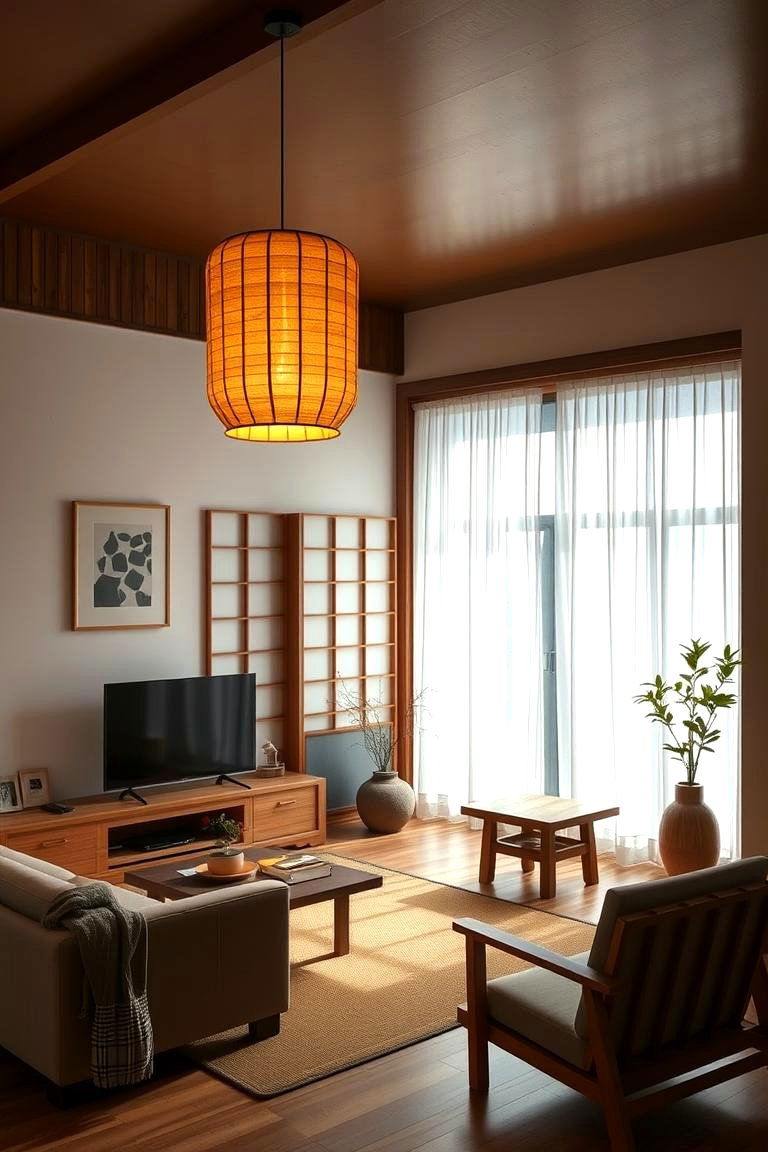
Bringing the outdoors in is essential for a Japandi feel. Incorporate a few well-chosen indoor plants to add a touch of life and freshness to the space. Plants not only enhance the aesthetic appeal but also improve air quality and create a more vibrant atmosphere. The key benefit is the natural connection they provide, fostering a sense of well-being and tranquility within the home.
5. Layer with Textured Textiles
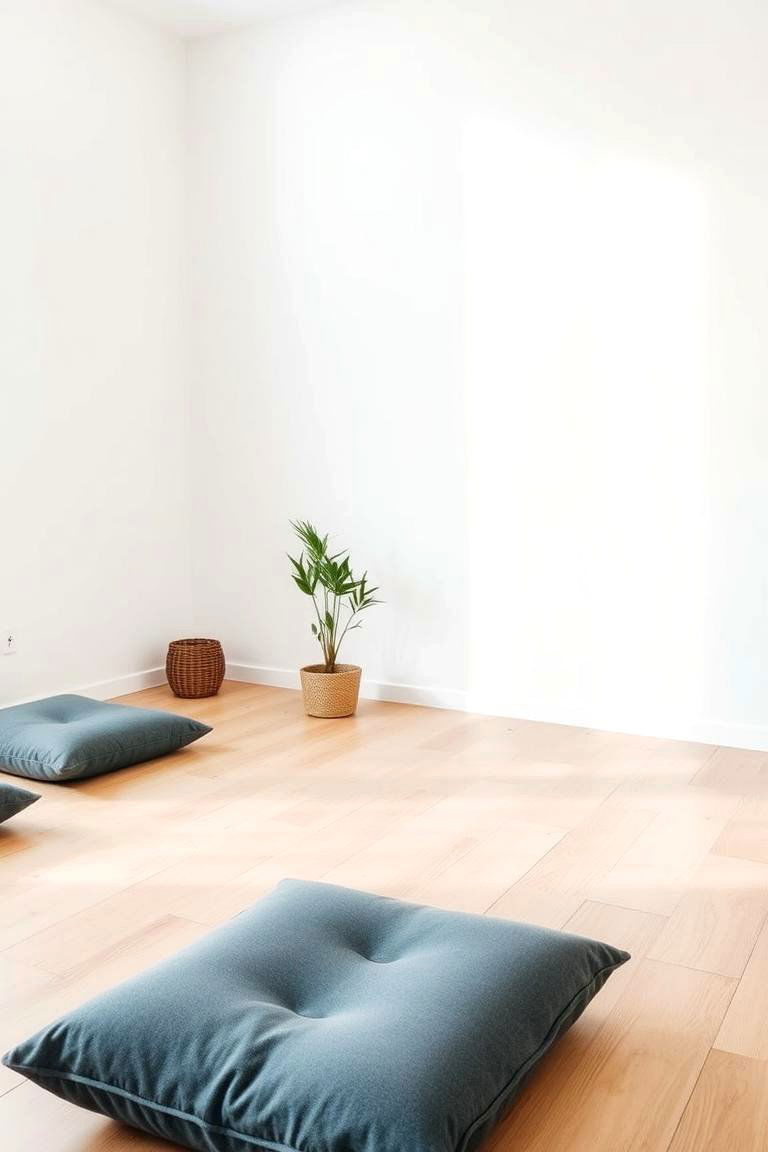
While the overall aesthetic is minimalist, incorporating textured textiles adds depth and warmth. Think linen throws, chunky knit cushions, and natural fiber rugs like jute or wool. These tactile elements introduce a layer of cozy comfort without disrupting the clean lines of the design. The benefit is a living room that feels inviting and comfortable, encouraging relaxation and a sense of hygge.
6. Opt for Statement Lighting
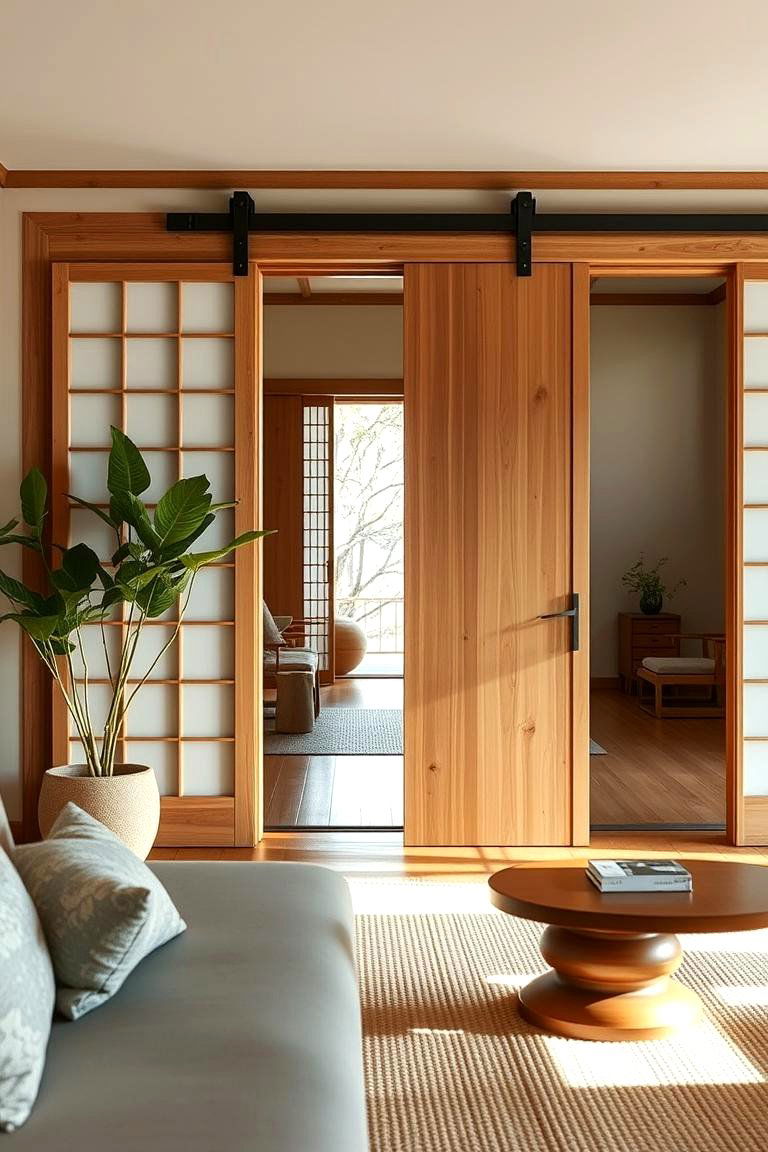
Thoughtfully chosen lighting fixtures can significantly enhance the ambiance of a Japandi living room. Consider simple yet elegant pendant lights, floor lamps with clean lines, or paper lanterns that diffuse a soft, warm glow. The key benefit is the ability to create a calming and inviting atmosphere, especially during the evening hours, promoting relaxation and a sense of peace.
7. Incorporate Open Shelving
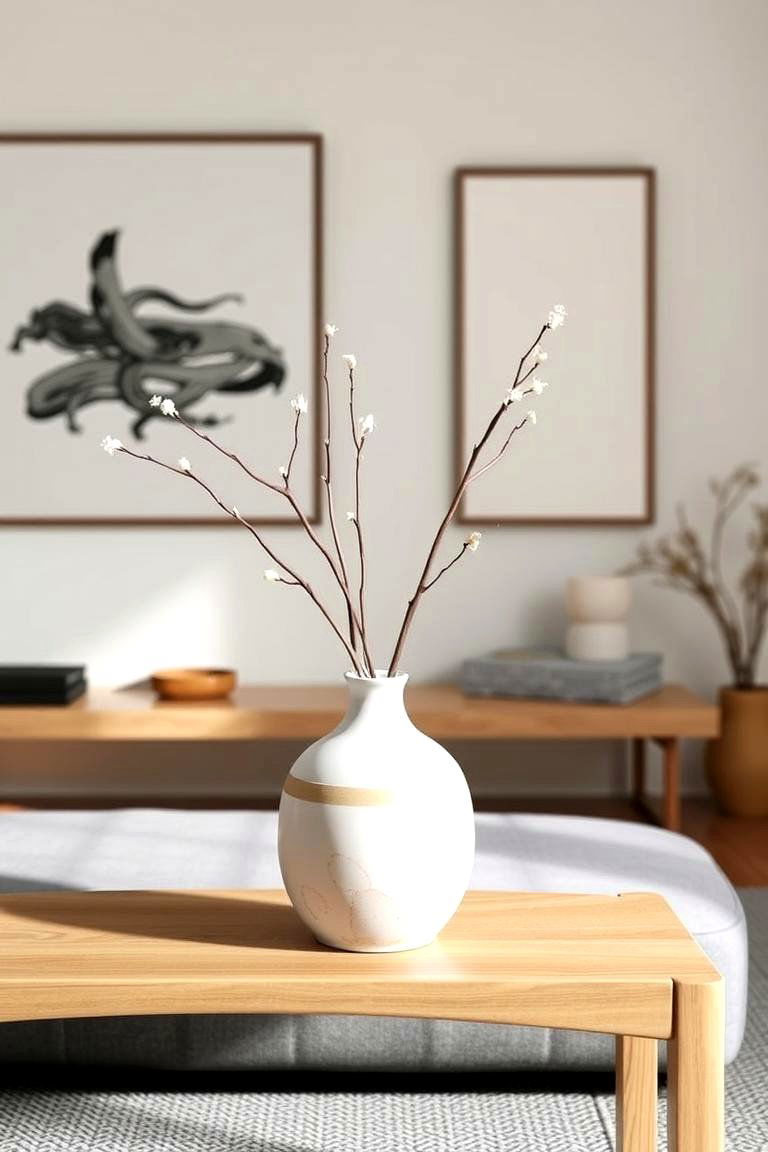
Open shelving can be both functional and aesthetically pleasing in a Japandi setting. Style shelves with a carefully curated selection of books, ceramics, and small plants, leaving plenty of negative space. This approach encourages mindful selection and display, turning everyday objects into decorative elements. The benefit is a visually appealing storage solution that also contributes to the minimalist aesthetic.
8. Introduce Comfortable Floor Cushions
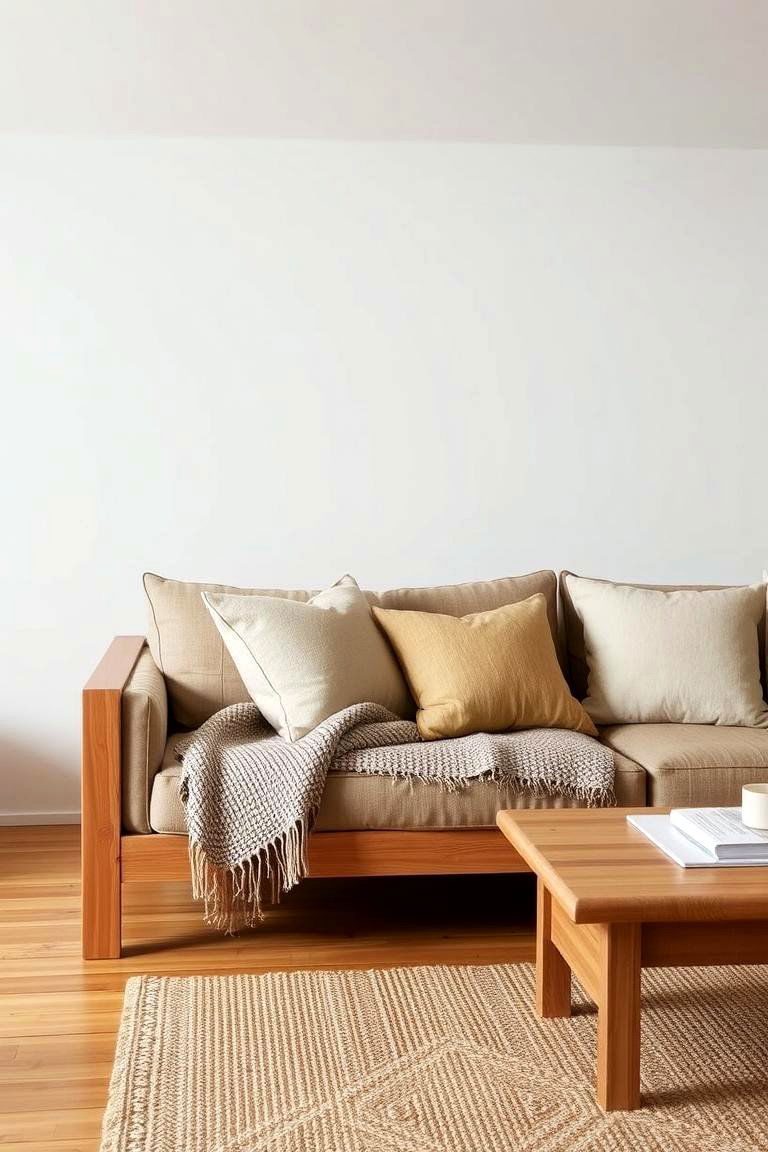
For a touch of Japanese tradition and added comfort, consider incorporating floor cushions into your Japandi living room. These can serve as extra seating or simply as decorative accents, adding a relaxed and informal vibe. The practical benefit is versatile seating that doesn't take up much visual space, perfect for smaller living areas.
9. Explore Sliding Doors or Room Dividers
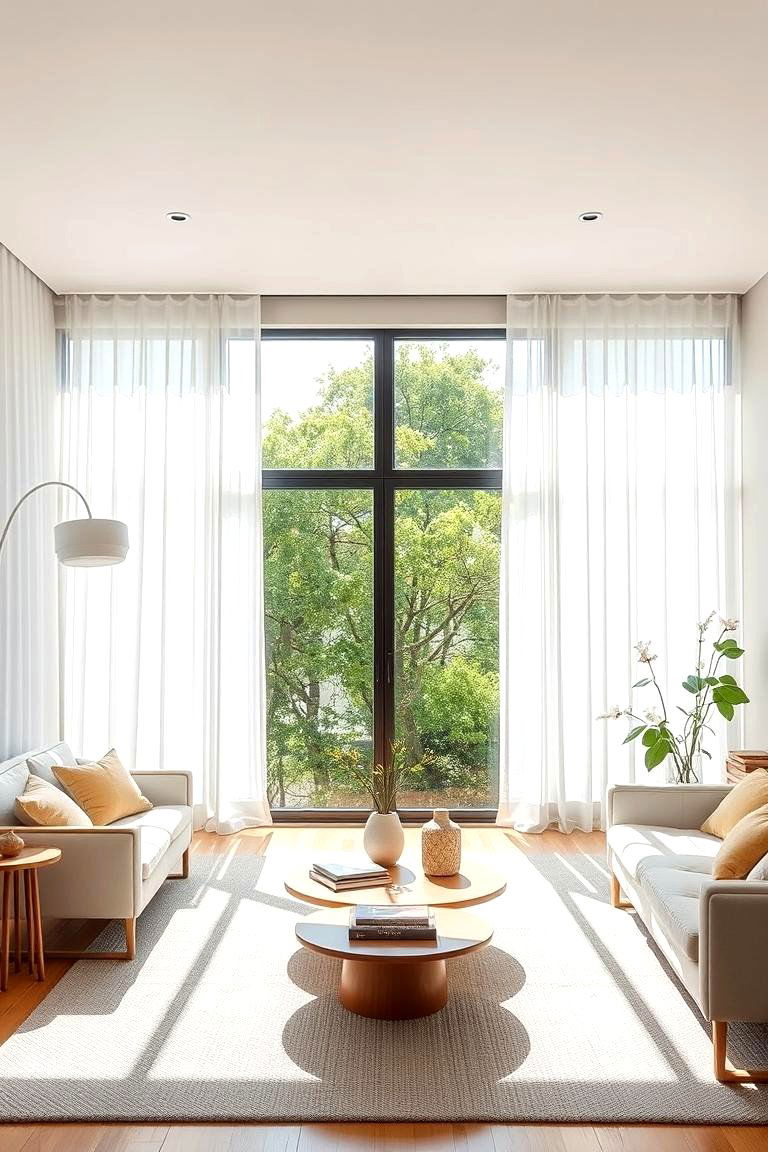
Drawing inspiration from traditional Japanese architecture, consider incorporating sliding doors or lightweight room dividers. These elements can help to define different zones within the living room while maintaining an open and airy feel. The benefit is flexible space management, allowing you to adapt the room to your needs and create a sense of flow.
10. Embrace Wabi-Sabi Imperfection

The Japanese concept of wabi-sabi celebrates the beauty of imperfection and transience. Incorporate elements that showcase natural variations, such as hand-thrown ceramics or vintage wooden pieces with a patina. This adds character and authenticity to the space. The benefit is a living room that feels more organic and lived-in, embracing the beauty of natural aging.
11. Integrate Functional Storage Solutions
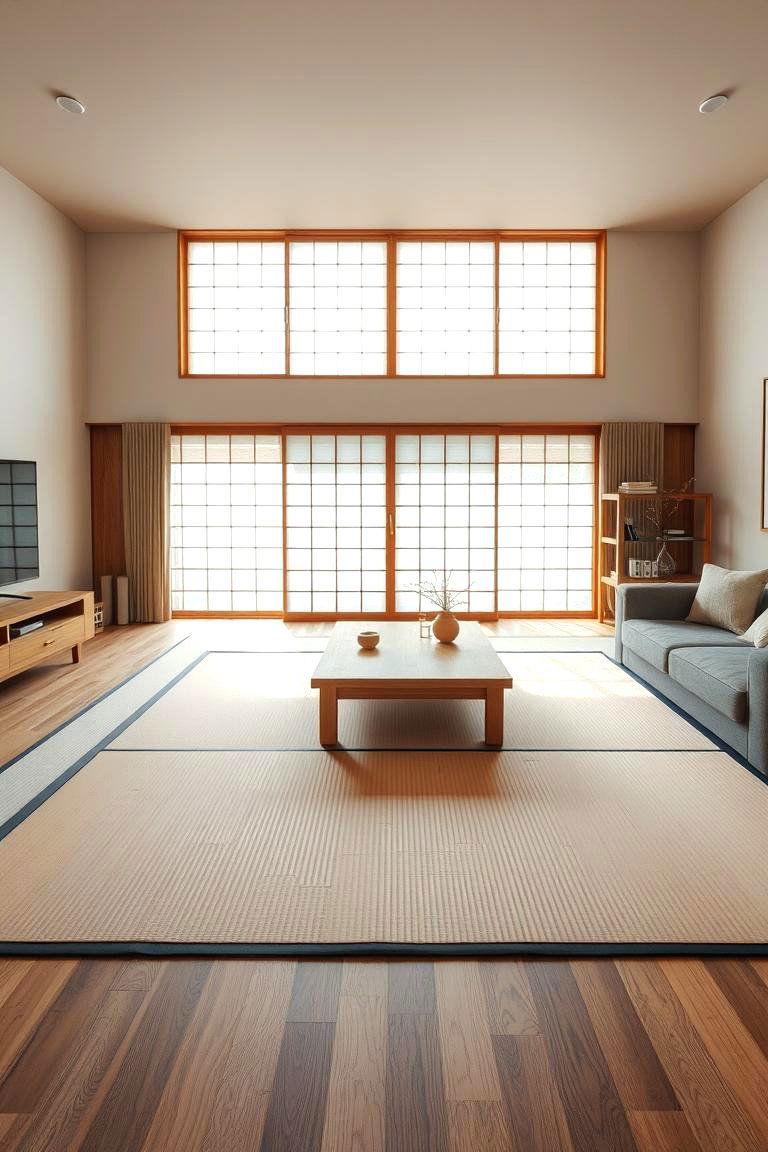
Maintaining a clutter-free environment is crucial in Japandi design. Opt for sleek, minimalist storage solutions such as cabinets with clean lines or woven baskets to keep items neatly tucked away. The practical benefit is a more organized and serene living space, reducing visual distractions and promoting a sense of calm.
12. Feature Artwork with Natural Themes
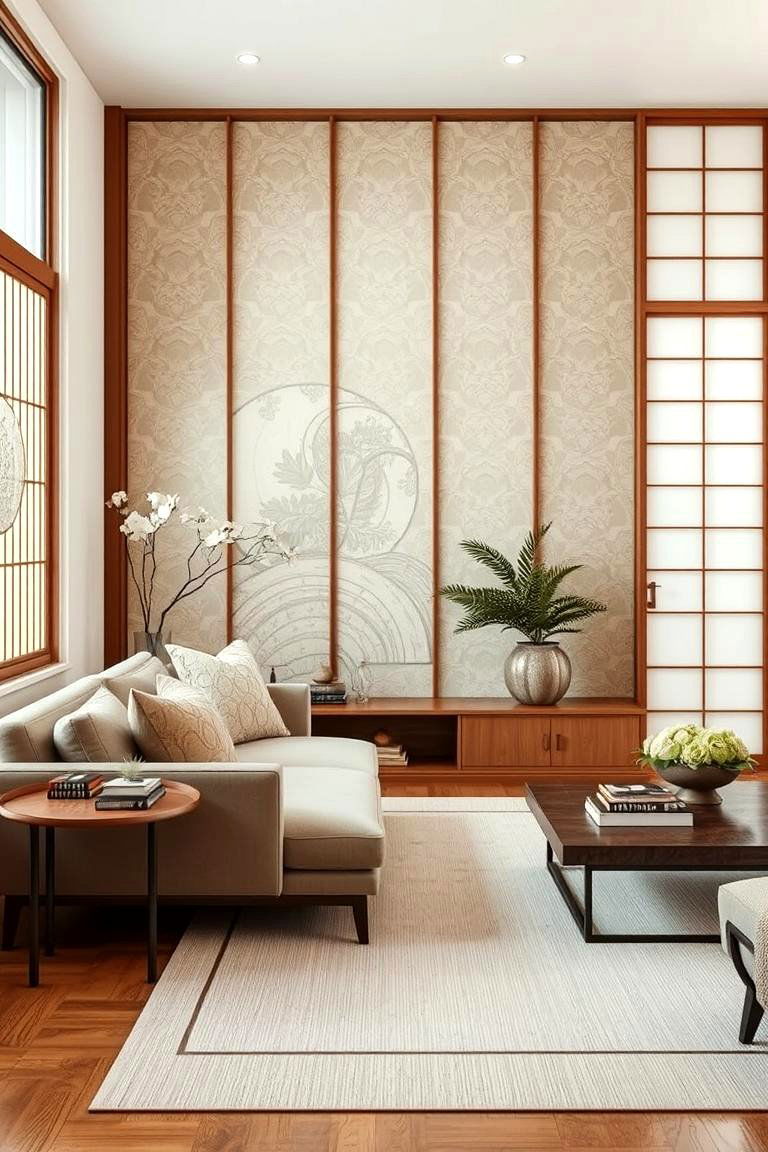
Choose artwork that complements the Japandi aesthetic, focusing on natural themes such as landscapes, botanical prints, or abstract pieces in muted tones. The key benefit is the addition of visual interest and personality without overwhelming the minimalist design. Select pieces that evoke a sense of tranquility and connection to nature.
13. Select Low-Profile Seating
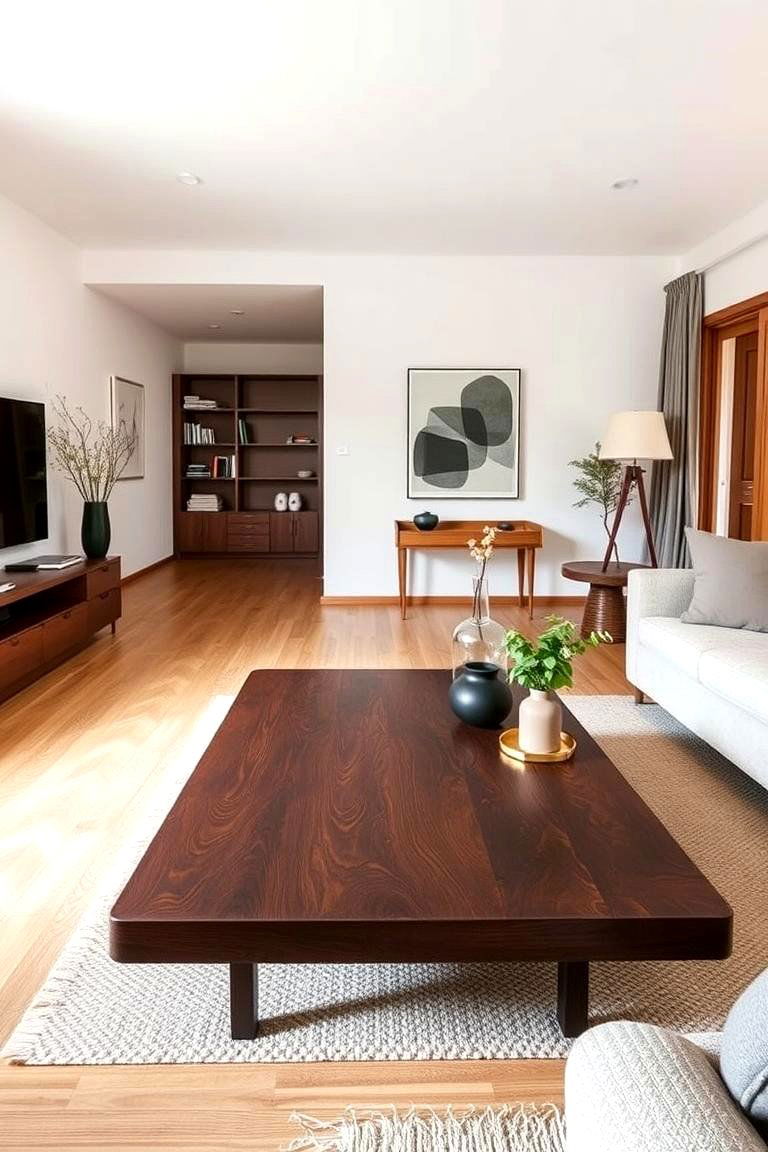
Low-profile sofas and armchairs are characteristic of both Japanese and Scandinavian design. Opt for pieces with clean lines and comfortable upholstery in natural fabrics. This creates a relaxed and inviting seating area that aligns with the understated elegance of the Japandi style. The benefit is comfortable furniture that doesn't dominate the space visually.
14. Maximize Natural Light
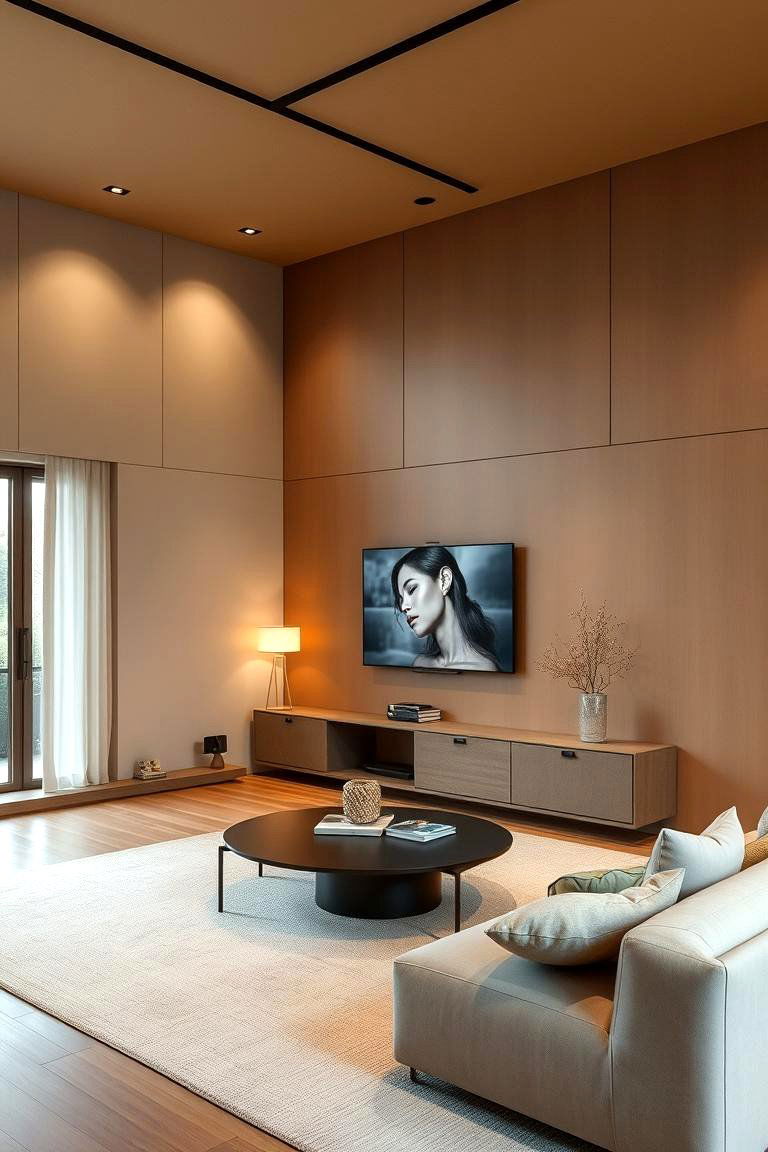
Both Japanese and Scandinavian design philosophies prioritize natural light. Keep window treatments minimal to allow as much daylight as possible to flood the living room. Sheer curtains or blinds in light colors are ideal. The key benefit is a brighter and more airy space that feels connected to the outdoors, enhancing mood and well-being.
15. Incorporate Handmade Ceramics
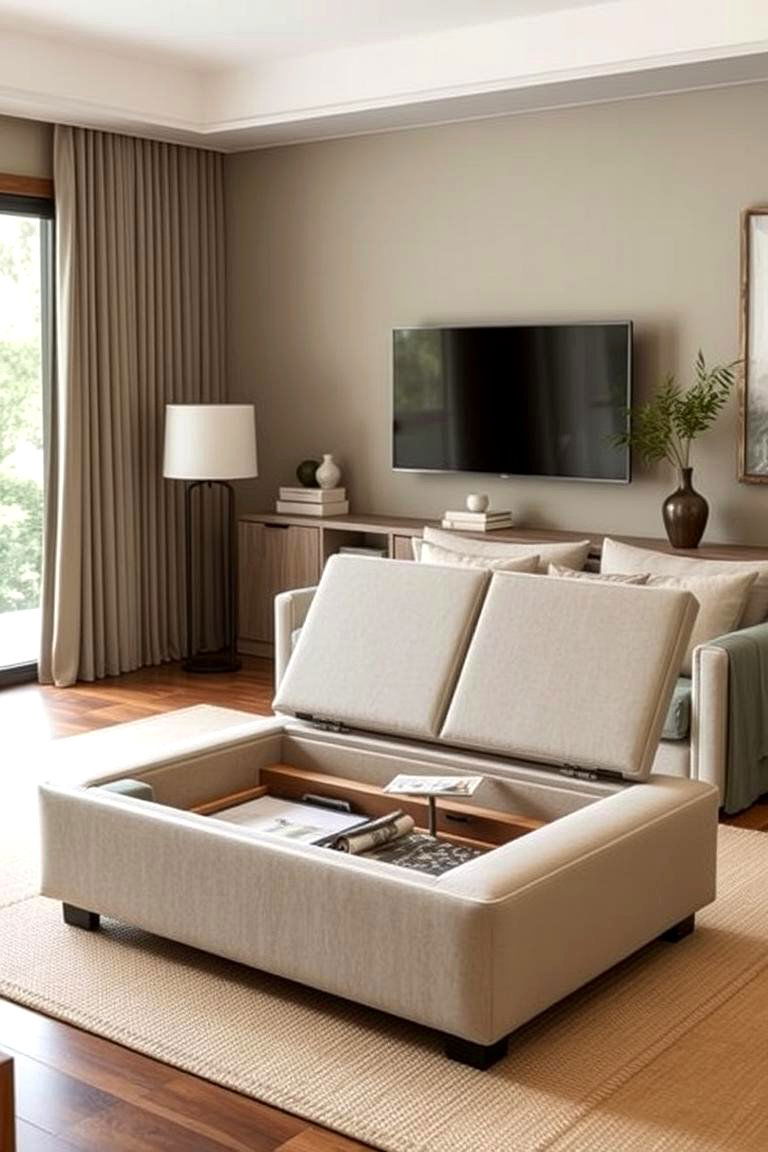
Handmade ceramic pieces, such as vases, bowls, or mugs, add a touch of artisanal charm to a Japandi living room. Their unique textures and subtle imperfections align perfectly with the wabi-sabi philosophy. The benefit is the introduction of handcrafted elements that bring character and a sense of authenticity to the space.
16. Introduce Bamboo Accents
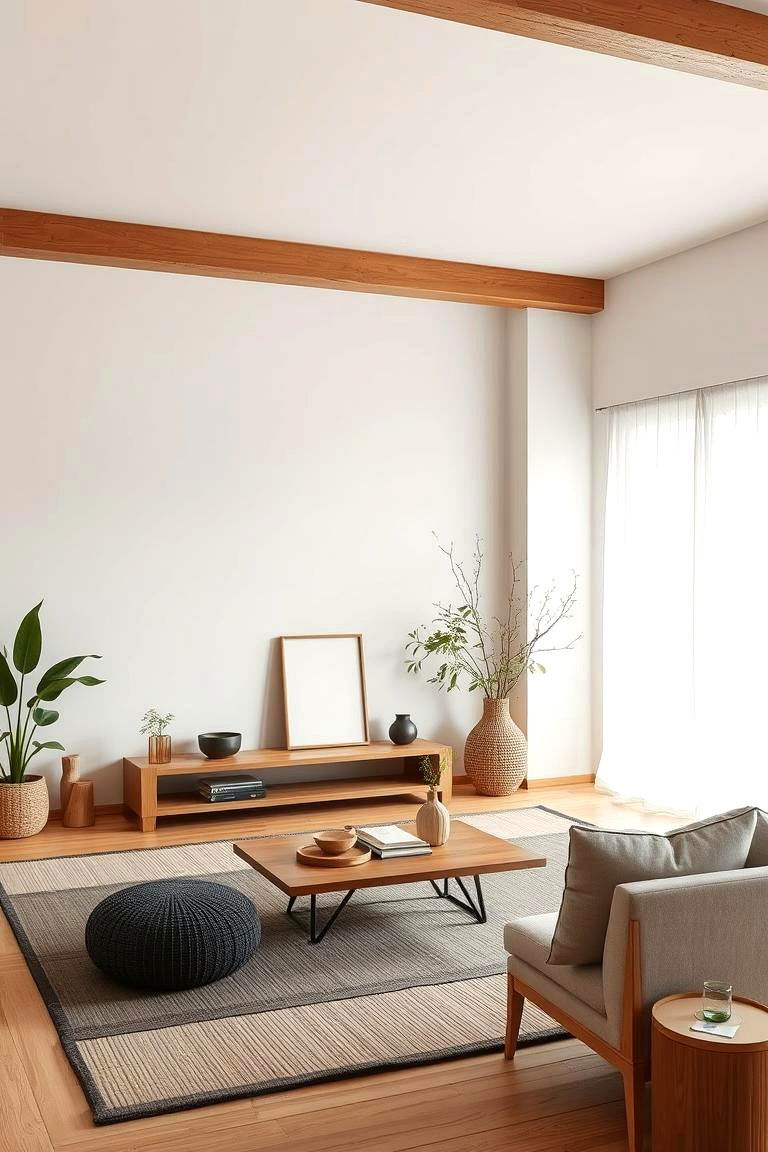
Bamboo is a versatile and sustainable material that fits seamlessly into the Japandi aesthetic. Consider incorporating bamboo elements such as blinds, decorative accents, or even small furniture pieces. The benefit is the addition of natural texture and a touch of organic elegance to the living room.
17. Utilize Tatami Mats as Rugs
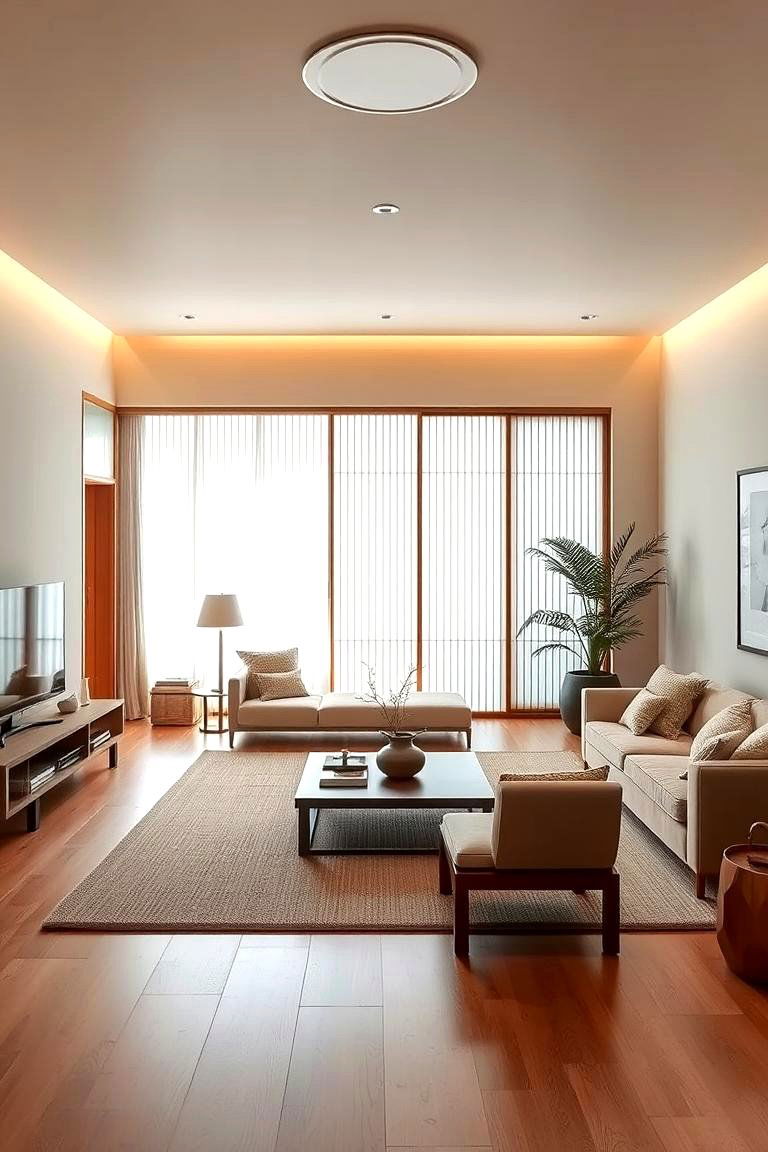
While traditional tatami rooms might not be feasible, you can incorporate the essence of tatami by using tatami mats as rugs. Their natural woven texture adds a unique Japanese touch to the living room. The benefit is the introduction of a distinct cultural element that also provides a comfortable and grounding surface.
18. Integrate Shoji Screen Inspired Elements
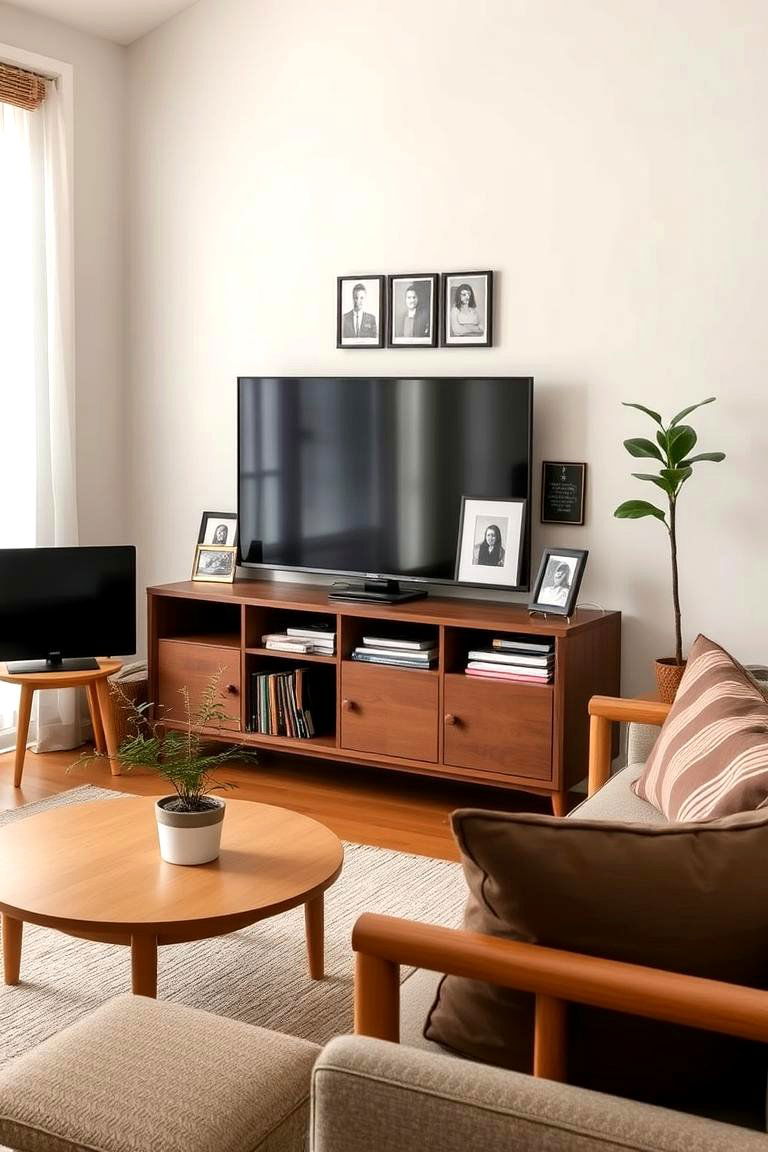
The clean lines and translucent panels of shoji screens can inspire various design elements in a Japandi living room. Consider using frosted glass panels in doors or incorporating geometric patterns reminiscent of shoji screens in artwork or textiles. The benefit is a subtle nod to Japanese design tradition that adds visual interest and a sense of lightness.
19. Play with Contrasting Dark and Light Wood
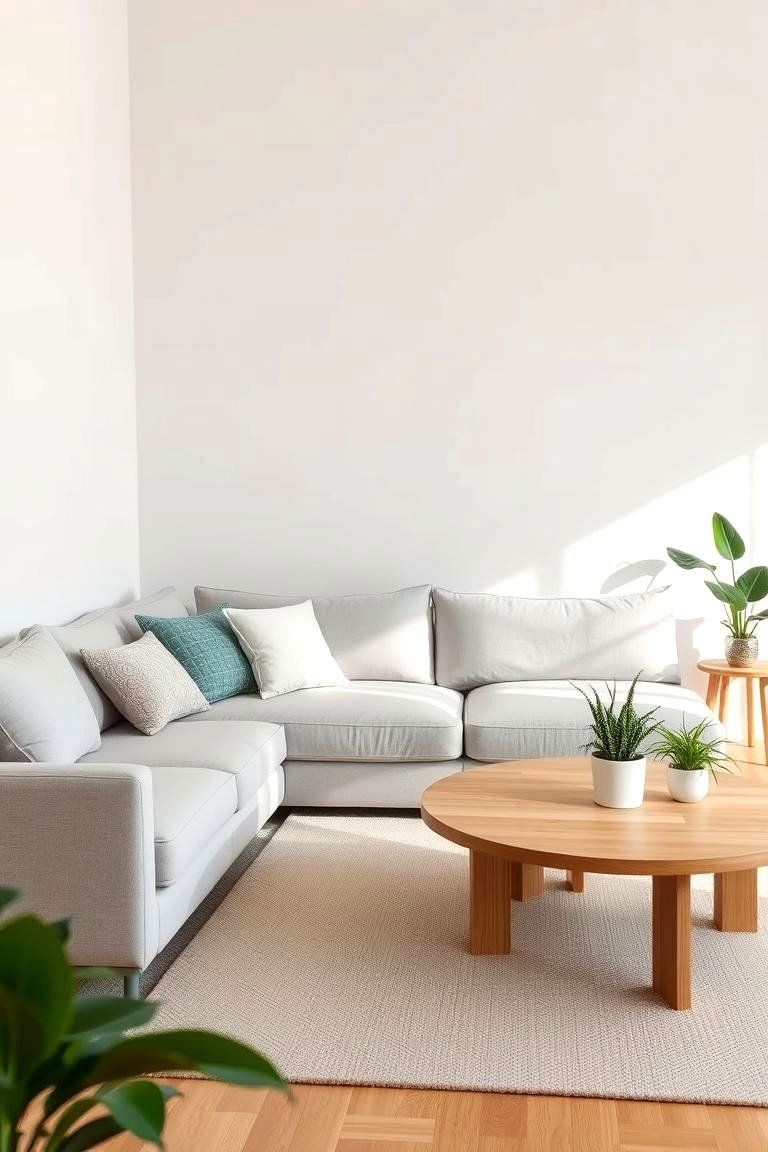
While light wood tones are prevalent, introducing contrasting dark wood accents can add depth and visual interest to a Japandi living room. Consider a dark wood coffee table or shelving unit against a backdrop of lighter wood flooring and furniture. The benefit is a more dynamic and sophisticated look while still maintaining the overall sense of balance.
20. Subtly Integrate Technology
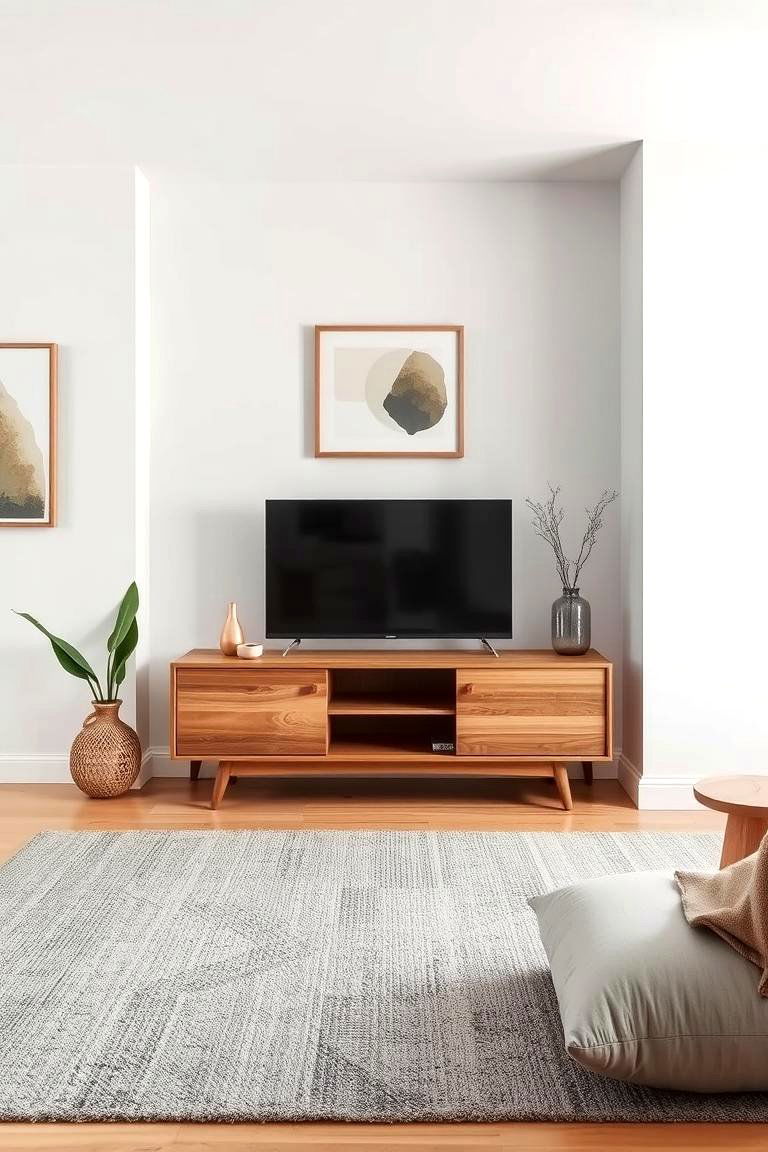
In a Japandi living room, technology should be present but not dominant. Opt for sleek, minimalist electronics and consider ways to conceal wires and devices. The benefit is a modern and functional space that doesn't sacrifice the calm and serene atmosphere of the design.
21. Choose Multi-functional Furniture
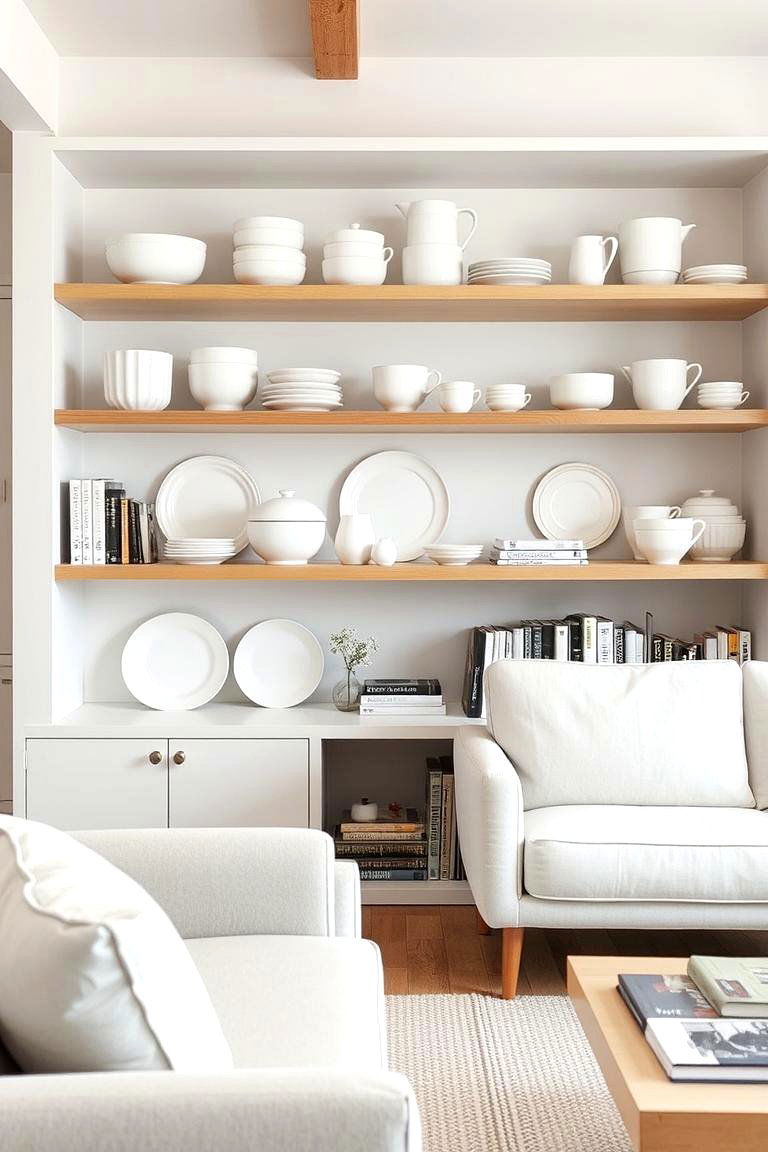
In line with the principles of minimalism and functionality, opt for multi-functional furniture pieces. A sofa bed, a coffee table with storage, or ottomans that can serve as seating or tables are excellent choices. The practical benefit is maximizing space and utility, especially in smaller living areas.
22. Cultivate a Calm and Serene Atmosphere
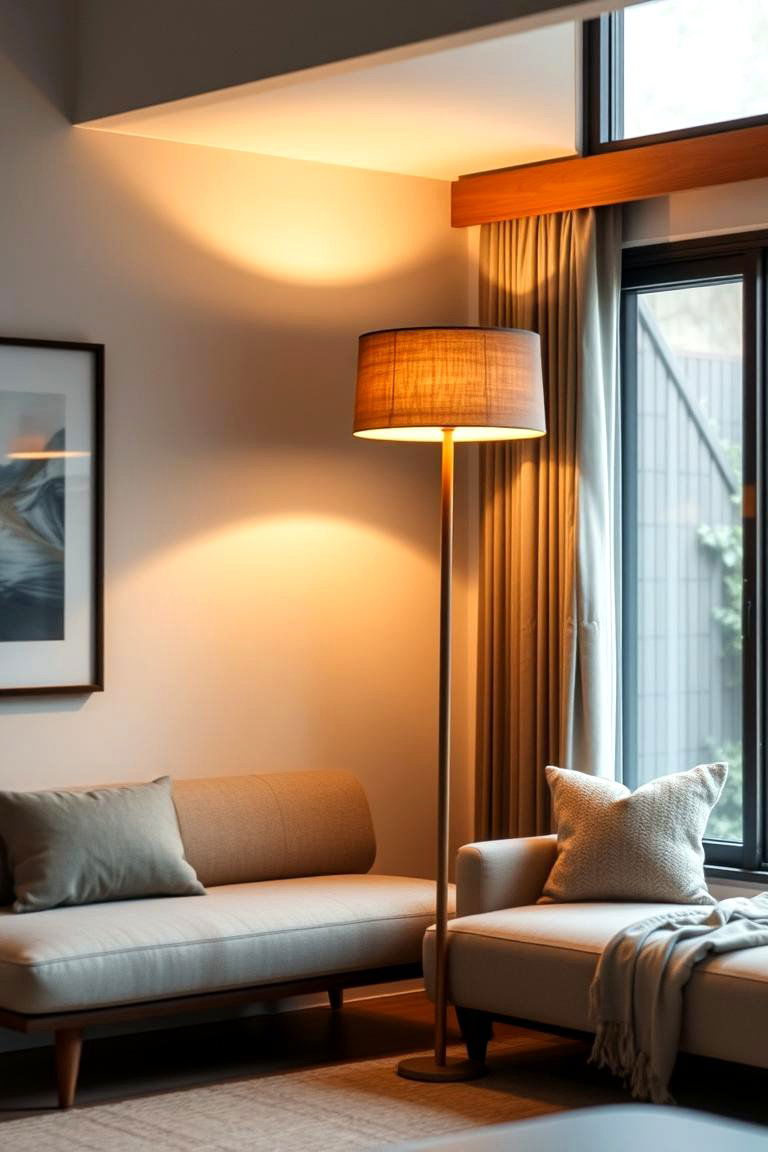
Ultimately, the goal of a Japandi living room is to create a calm and serene atmosphere. Every element should contribute to a feeling of peace and tranquility. The benefit is a living space that serves as a true sanctuary, promoting relaxation and mental well-being.
23. Emphasize Empty Space (Ma)
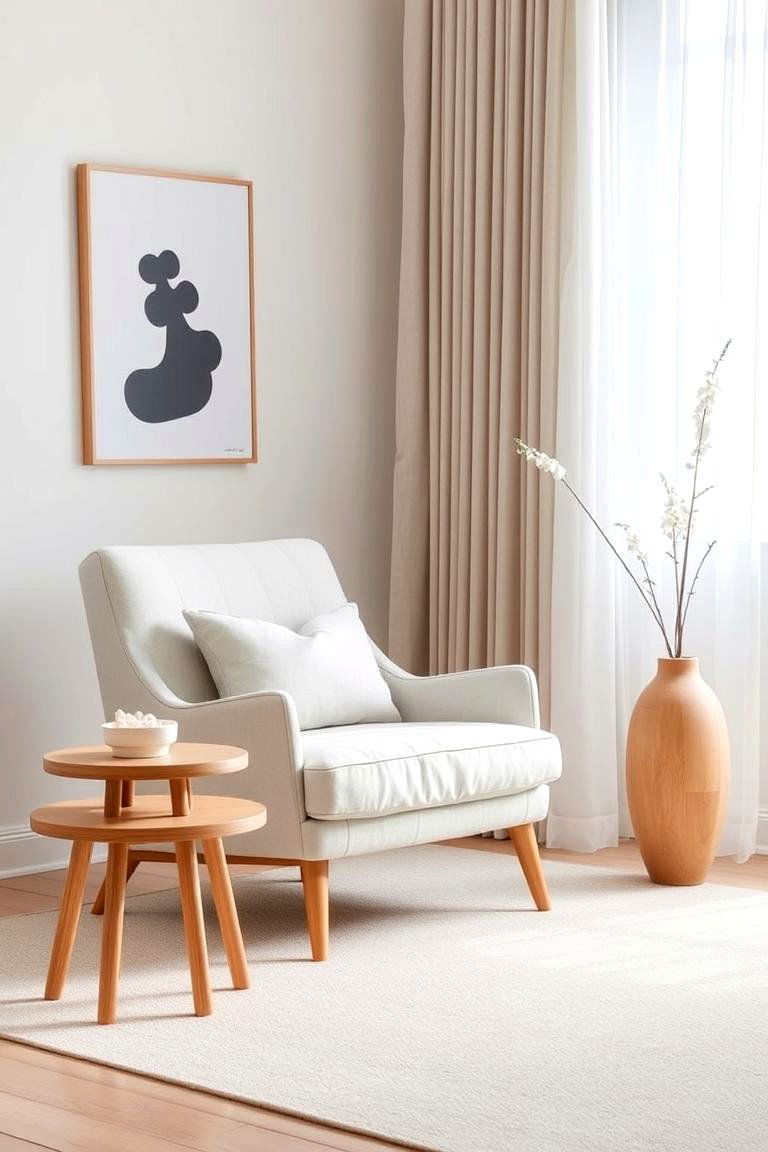
The Japanese concept of "Ma" emphasizes the importance of empty space in design. Allow for areas of visual rest in your Japandi living room, avoiding overcrowding furniture and decor. This creates a sense of spaciousness and allows the eye to appreciate the carefully chosen elements. The benefit is a more balanced and harmonious living environment.
24. Incorporate Meaningful Personal Touches
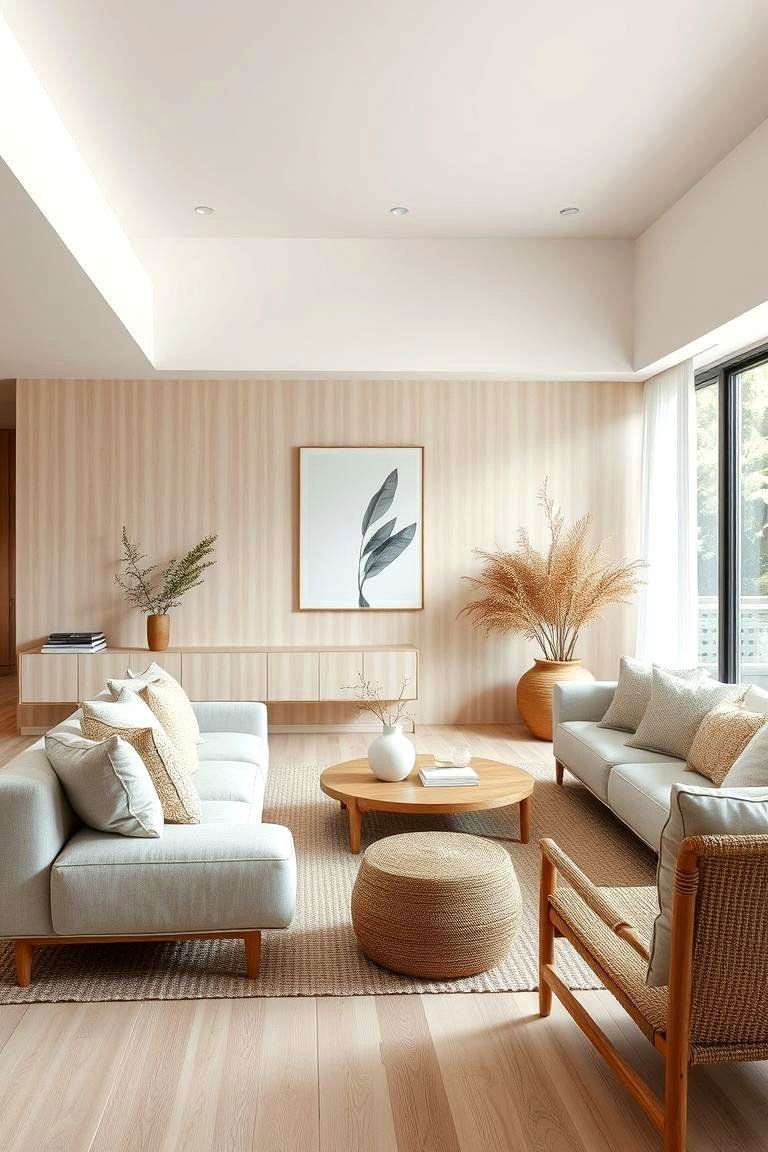
While minimalism is key, a Japandi living room should still reflect your personal style. Incorporate a few carefully selected personal items, such as cherished photographs or meaningful souvenirs, to add warmth and character. The benefit is a space that feels both stylish and uniquely yours, fostering a sense of belonging and comfort.
Conclusion:
Embracing the principles of Japandi design in your living room offers a pathway to creating a harmonious and tranquil sanctuary. By thoughtfully blending the clean lines and functionality of Scandinavian aesthetics with the natural materials and serene simplicity of Japanese design, you can cultivate a space that promotes well-being and understated elegance. The focus on minimalism, natural elements, and a calming color palette ensures a living area that is both visually appealing and deeply restorative. Consider these 24 Japandi living room ideas as a starting point to infuse your home with this beautifully balanced and increasingly popular design philosophy.


